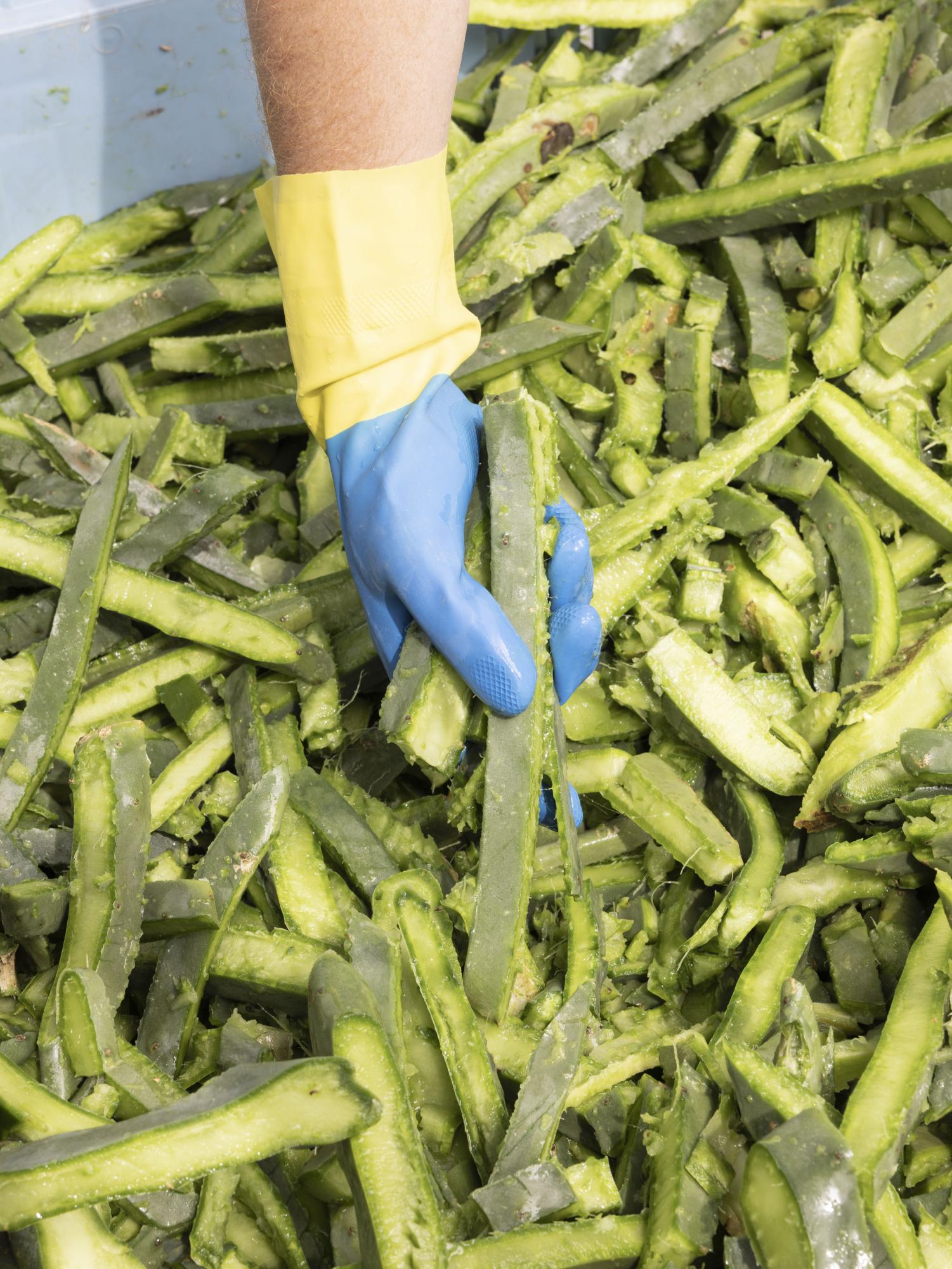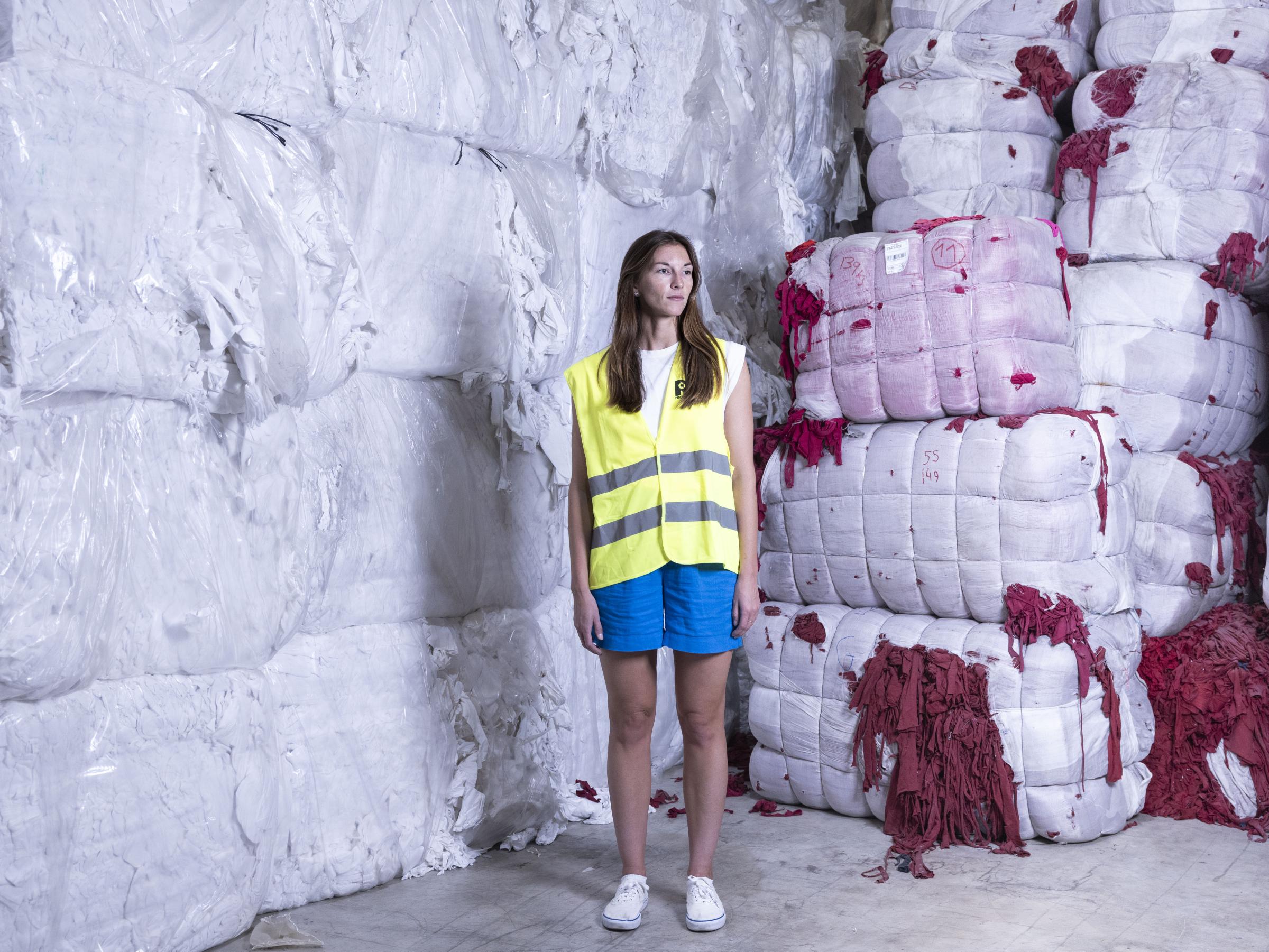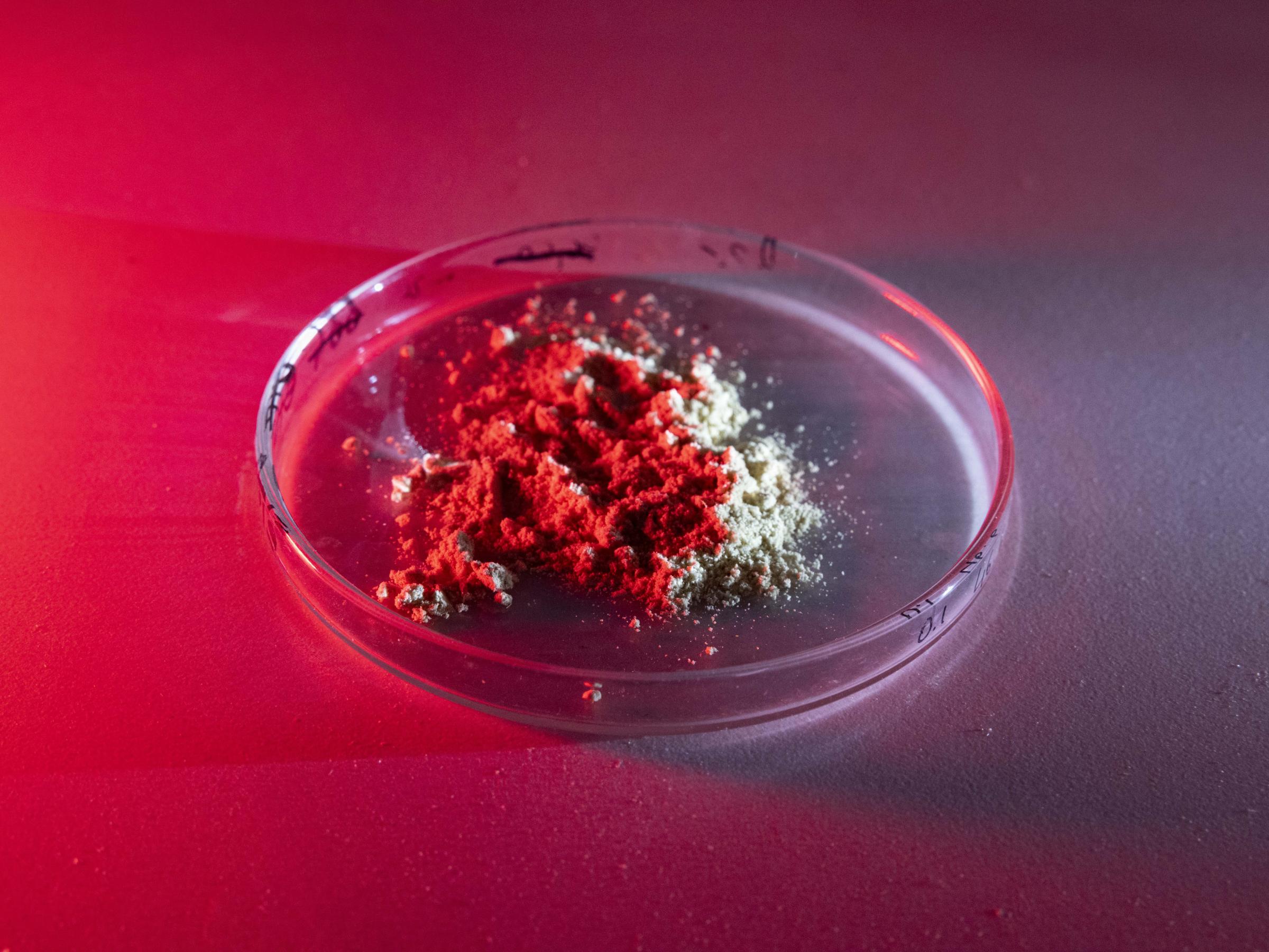
Ferrara, Emilia-Romagna - September 2022. Detail of the result of the first transformation. Following the chemical transformation of the waste and its micronization, a biopolymer is obtained in the form of a powder. It will later be transformed into a liquid and spread on a support base that will form the final material
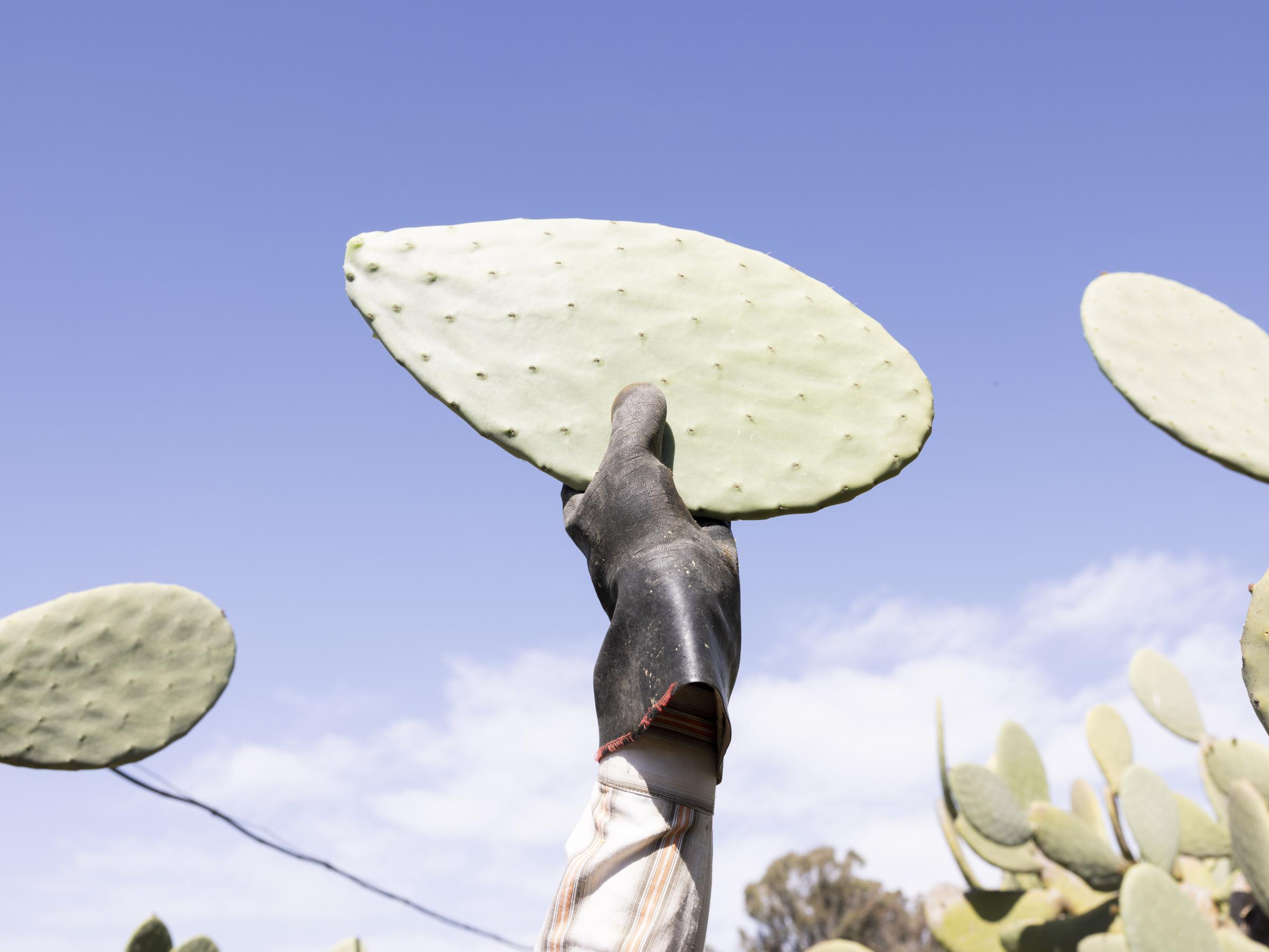
Sicily, May 2022. A worker's hand lifting a prickly pear shovel to the sky
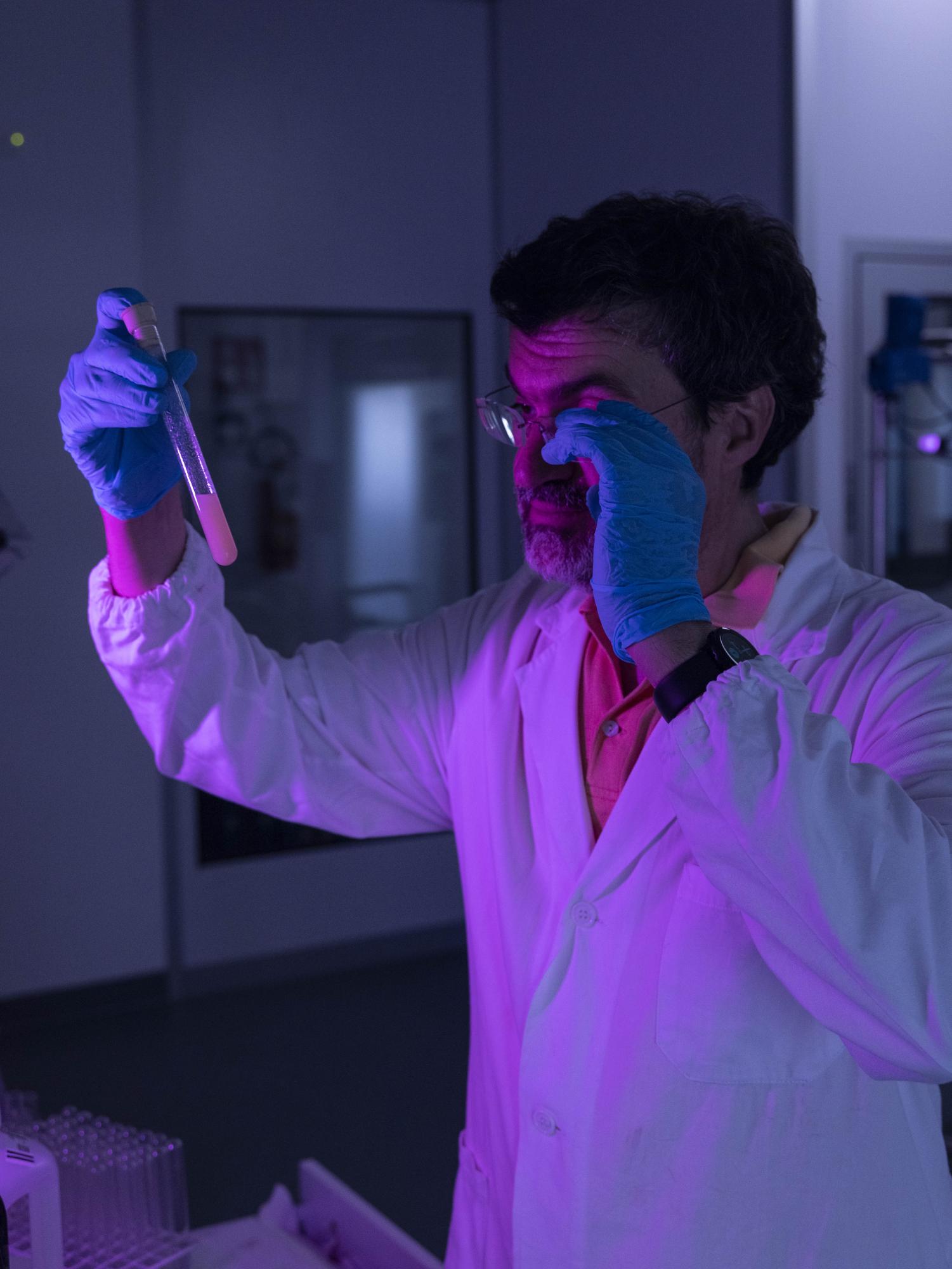
Ferrara, Emilia-Romagna - September 2022. Roberto Merighi, a chemist and partner in the company, performs some tests on the chemical characteristics of biopolymer before it goes to industrial production.
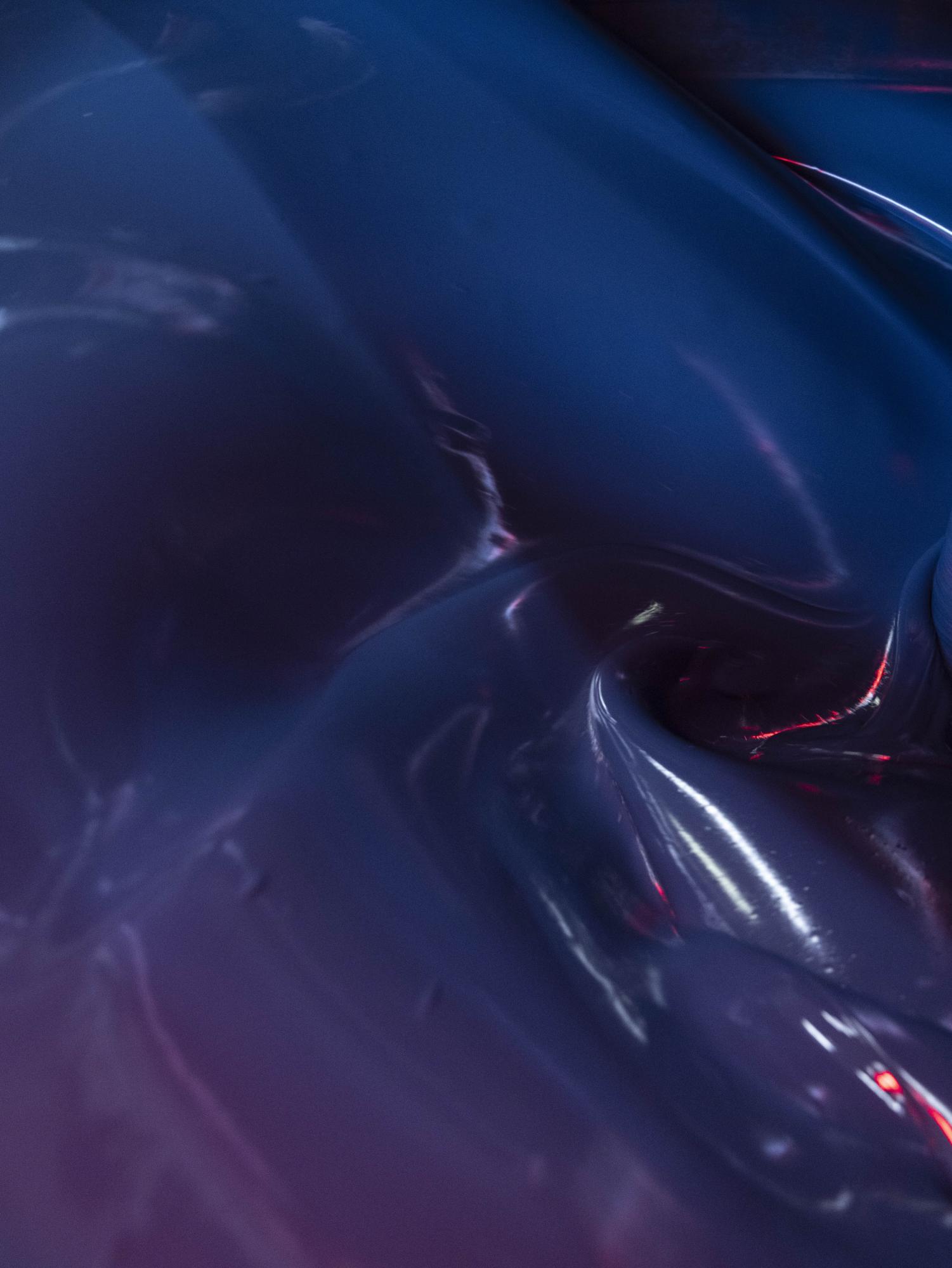
Como, July 2022. Detail of the liquid made from the biopolymer. This liquid will then be smeared onto a backing which, once dry, will become the final fabric
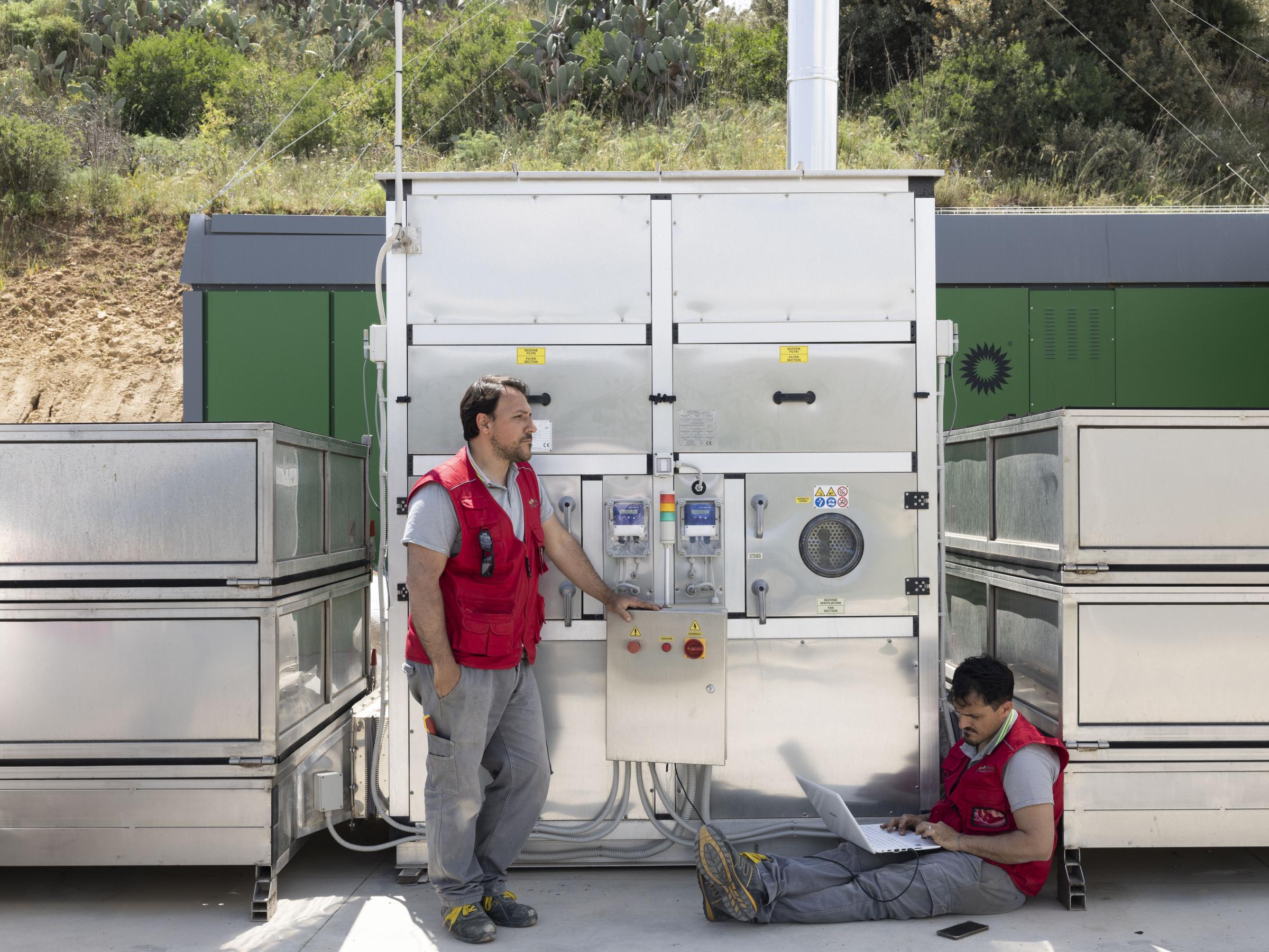
Sicily, May 2022. The engineers who designed the drying plant are doing maintenance work. This plants does not exist commercially and was entirely designed and built for drying cactus waste product
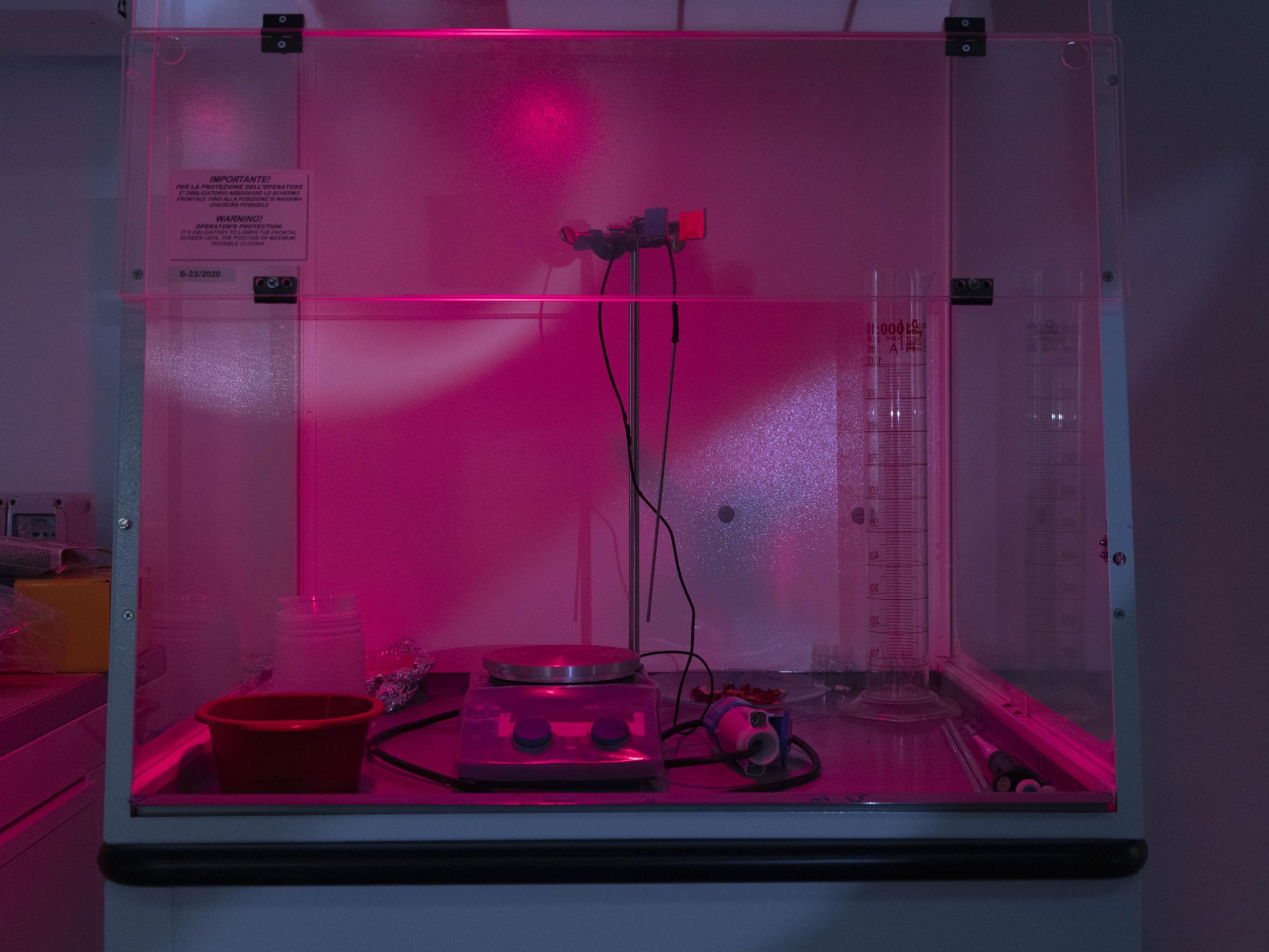
Ferrara, Emilia-Romagna September 2022. Workstation where the chemical characteristics of biopolymer are tested before moving to large-scale industrial production.
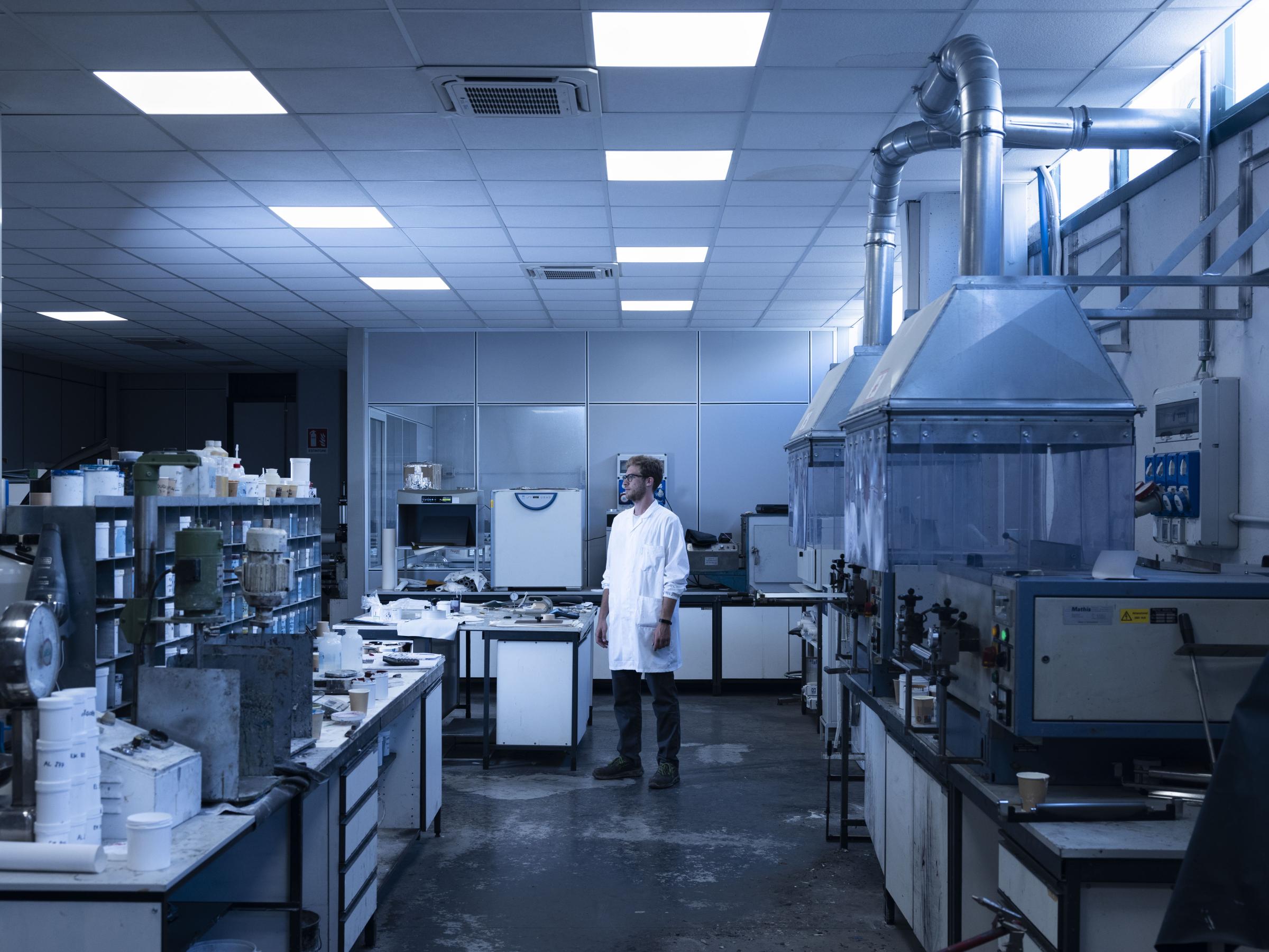
Milan, Lombardy - July 2022. A chemical worker, who tests materials before production, poses for a portrait inside his laboratory.
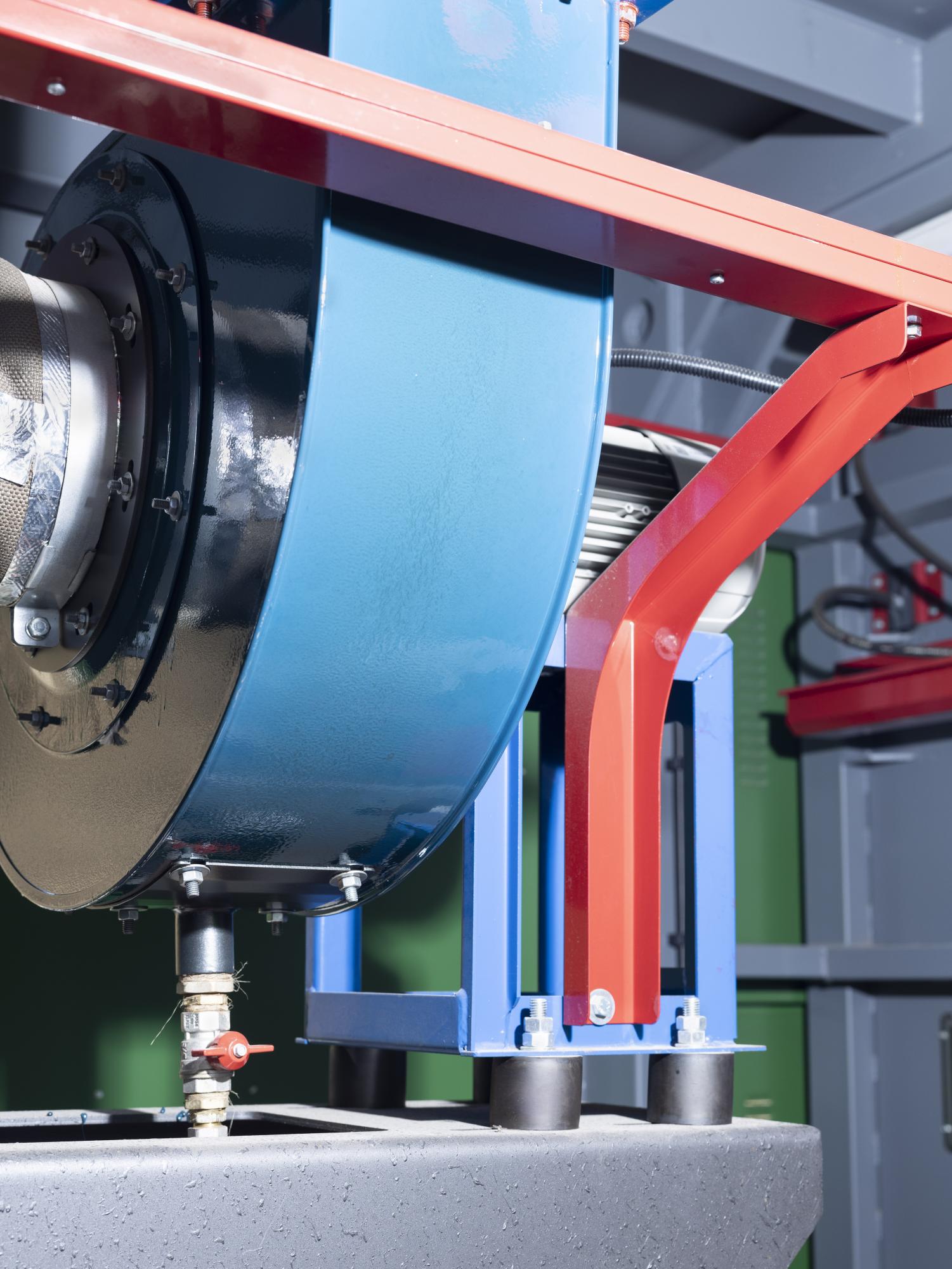
Sicily, May 2022. Detail of the interior of the dryer boiler
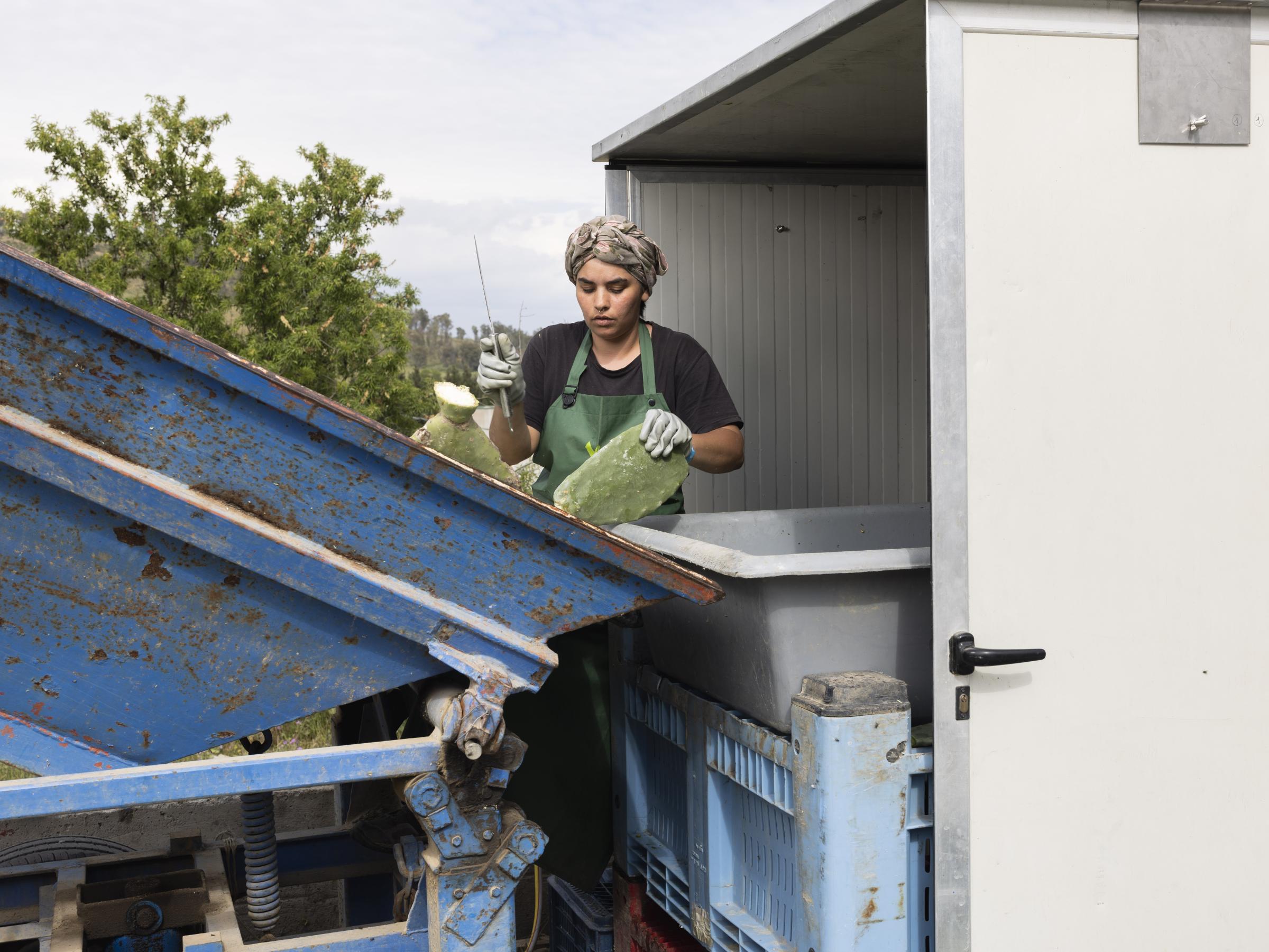
Sicily, May 2022. An operator is cutting blades arrived from the fields. The shovels once harvested are cut into small strips from which useful substances are then made into cosmetic products before the waste being dried
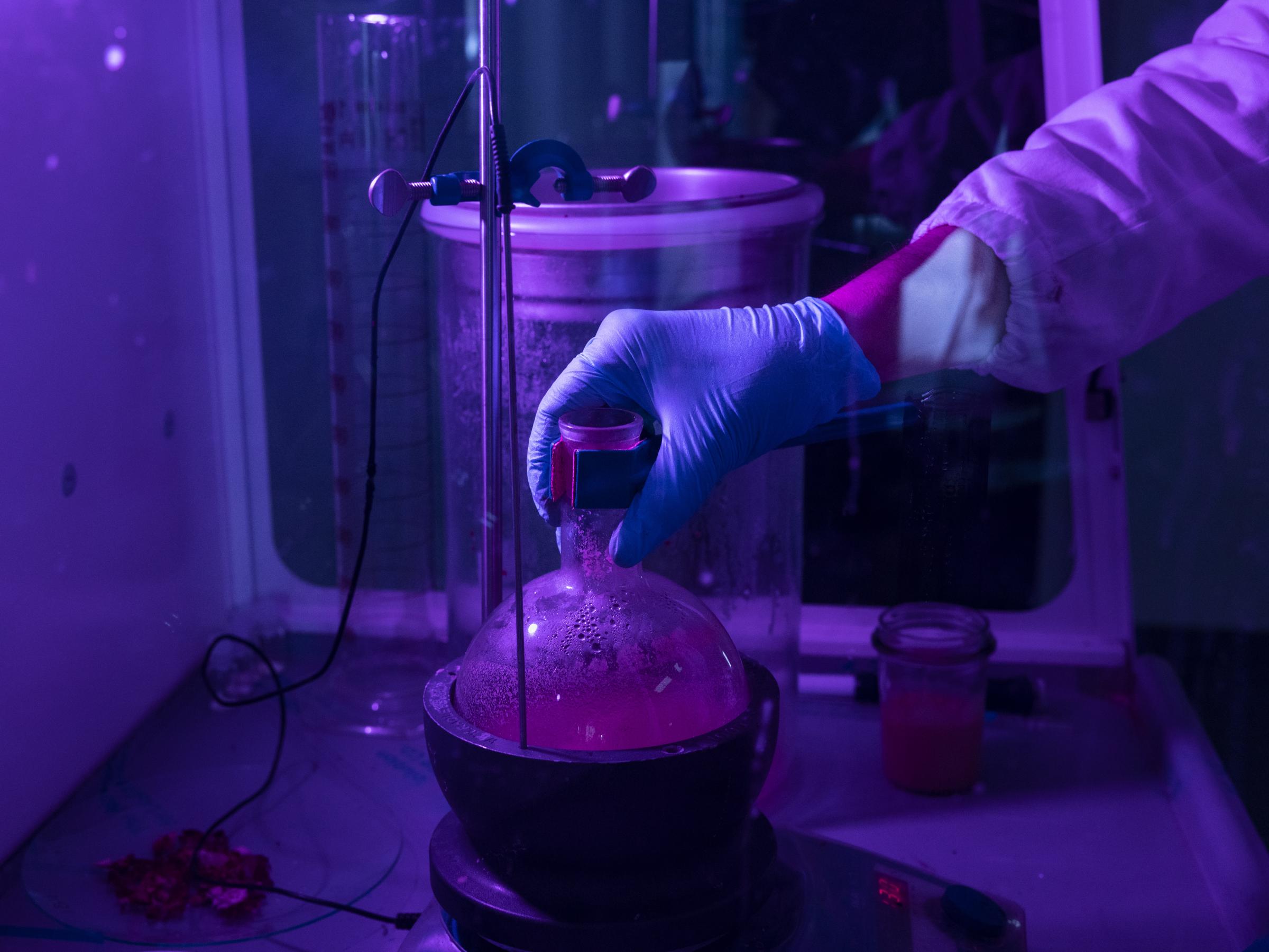
Ferrara, Emilia-Romagna - September 2022. Roberto Merighi, a chemist and partner in the company, performs some tests on the chemical characteristics of biopolymer.
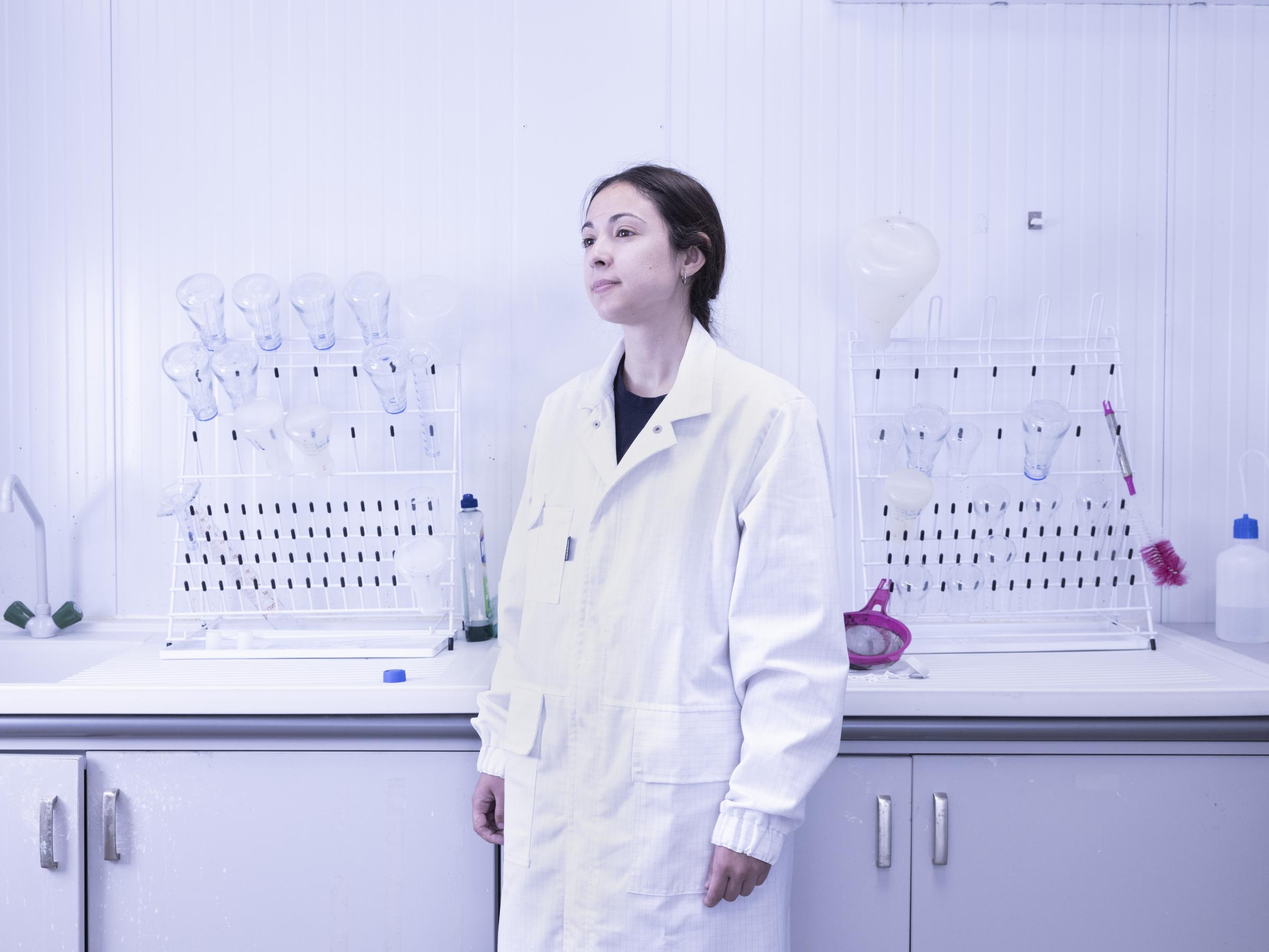
Alicante, Spain, June 2024. Paula stands for a portrait in the textile laboratory. Within this lab, Paula is running tests of the quality of our fiber. The tests are done after the waste has been recycled and the fiber created, then small samples from each lote are taken to test.
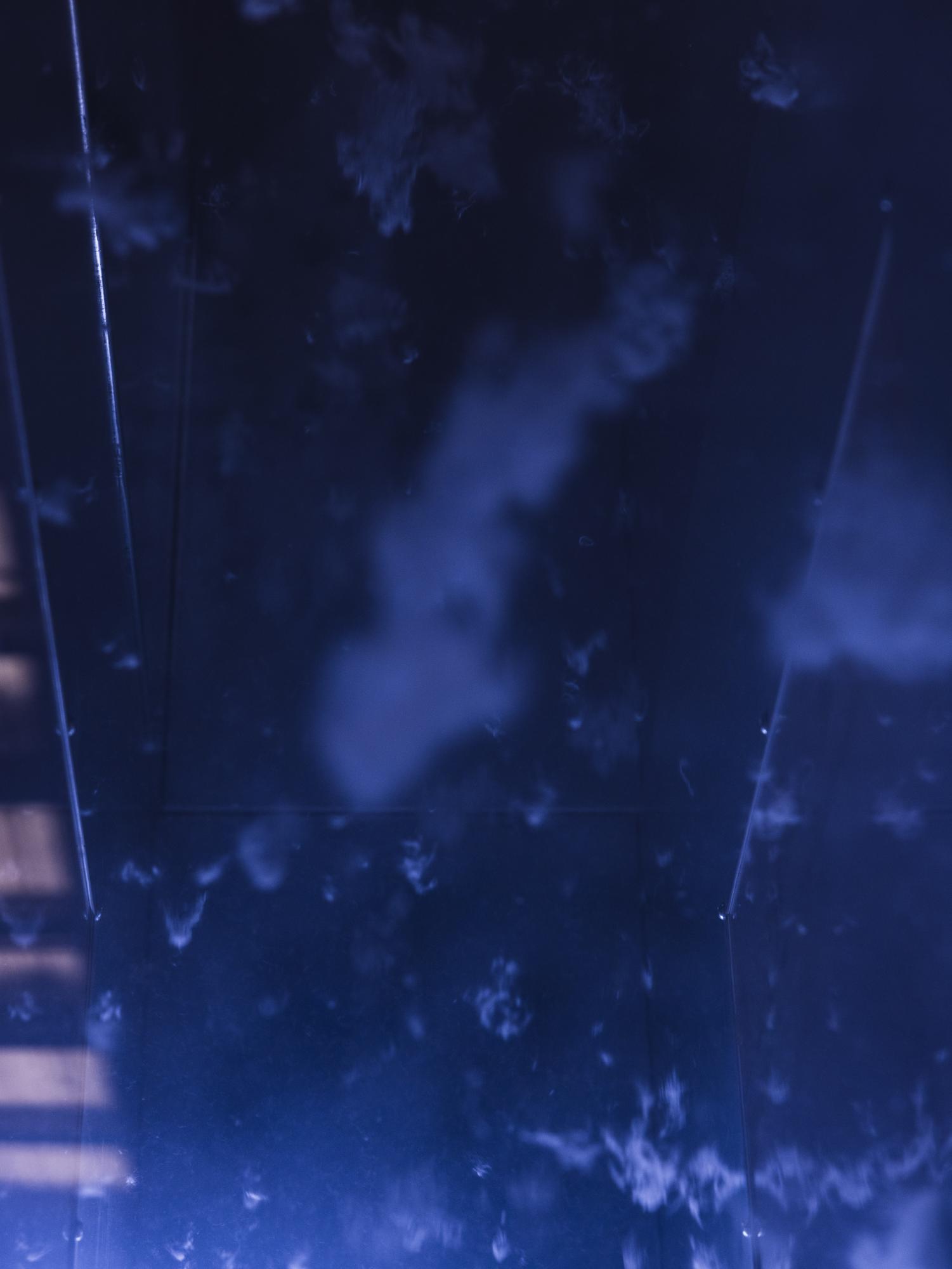
Alicante, Spain, June 2024. Some ground fabric flakes fall from the apex of the machine before ending up on the control roller. The cutting machine cuts the waste into smaller pieces where it is then sprayed with antistatic spray before going into our shredding machine and transformed into fiber.
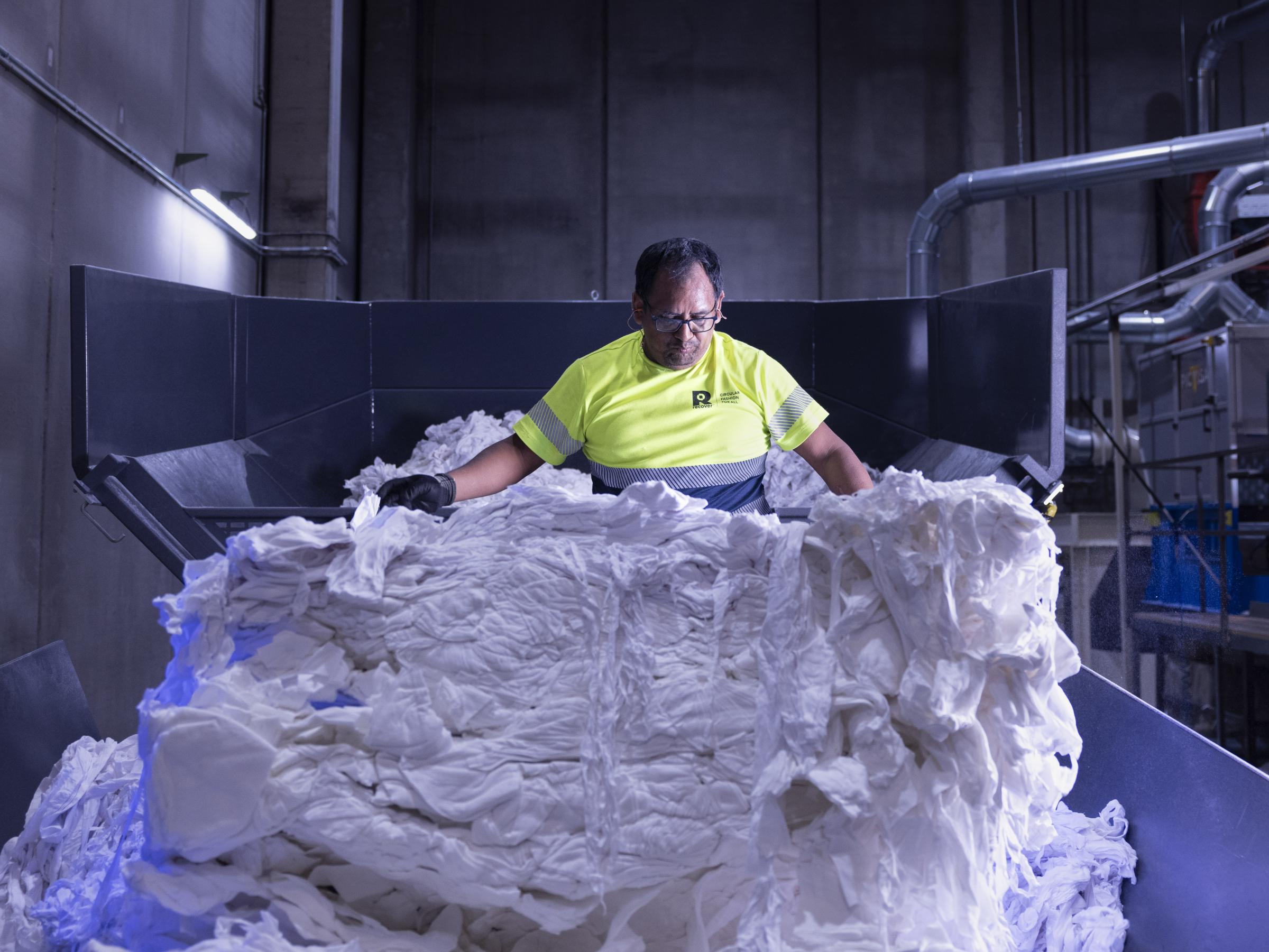
Alicante, Spain, June 2024. An operator is unpacking the block of raw textile waste before feeding it into the cutting machine. The raw textile waste is first divided by color and sorted and then cut into small pieces and processed to obtain 100 percent recycled yarn. Blue lights on the sides of the machine are used to identify and discard white textile waste obtained through a dyeing process and keep only those with a natural white coloration.
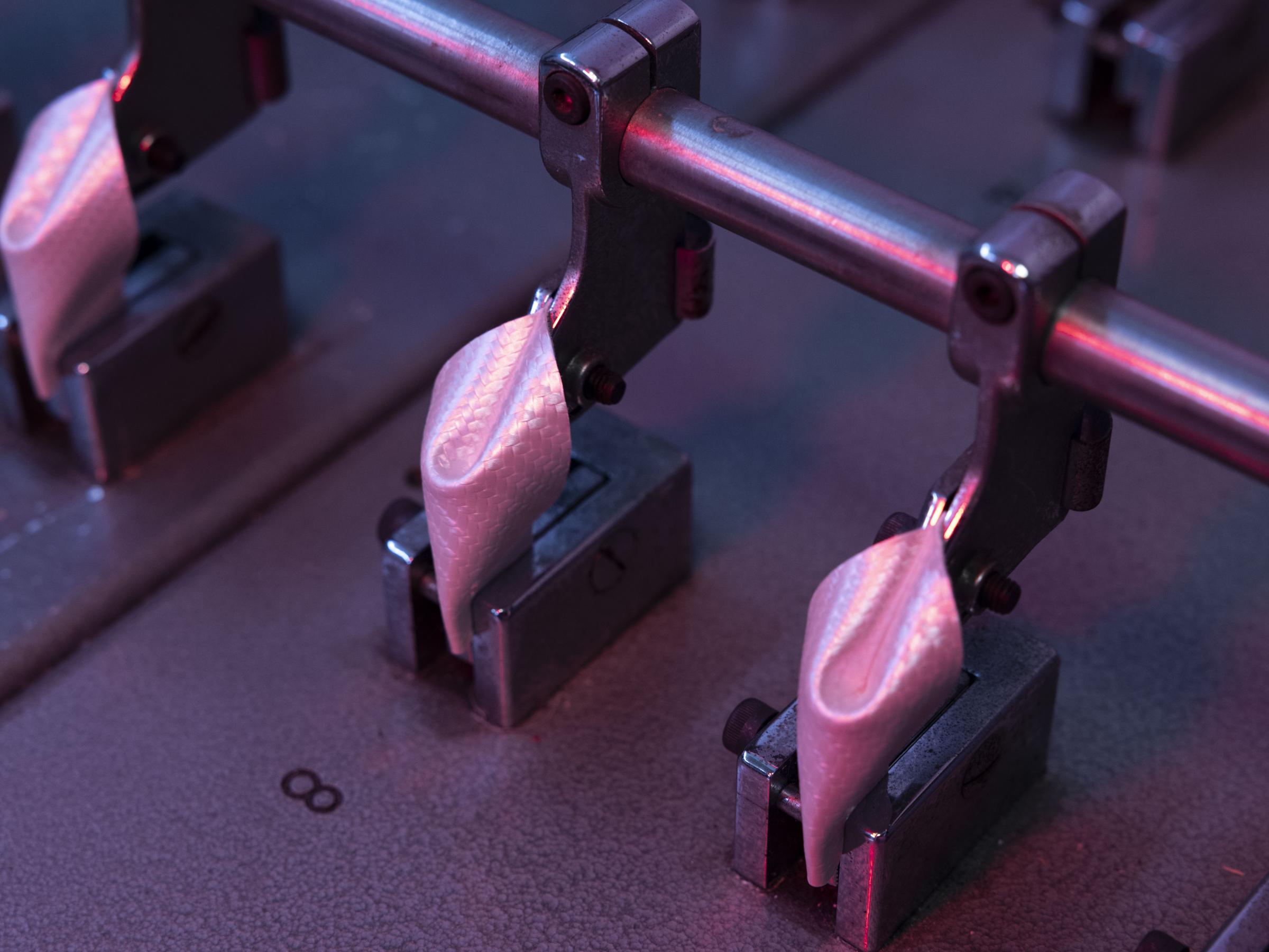
Como, July 2022. Stress test conducted on the material to measure its strength performance
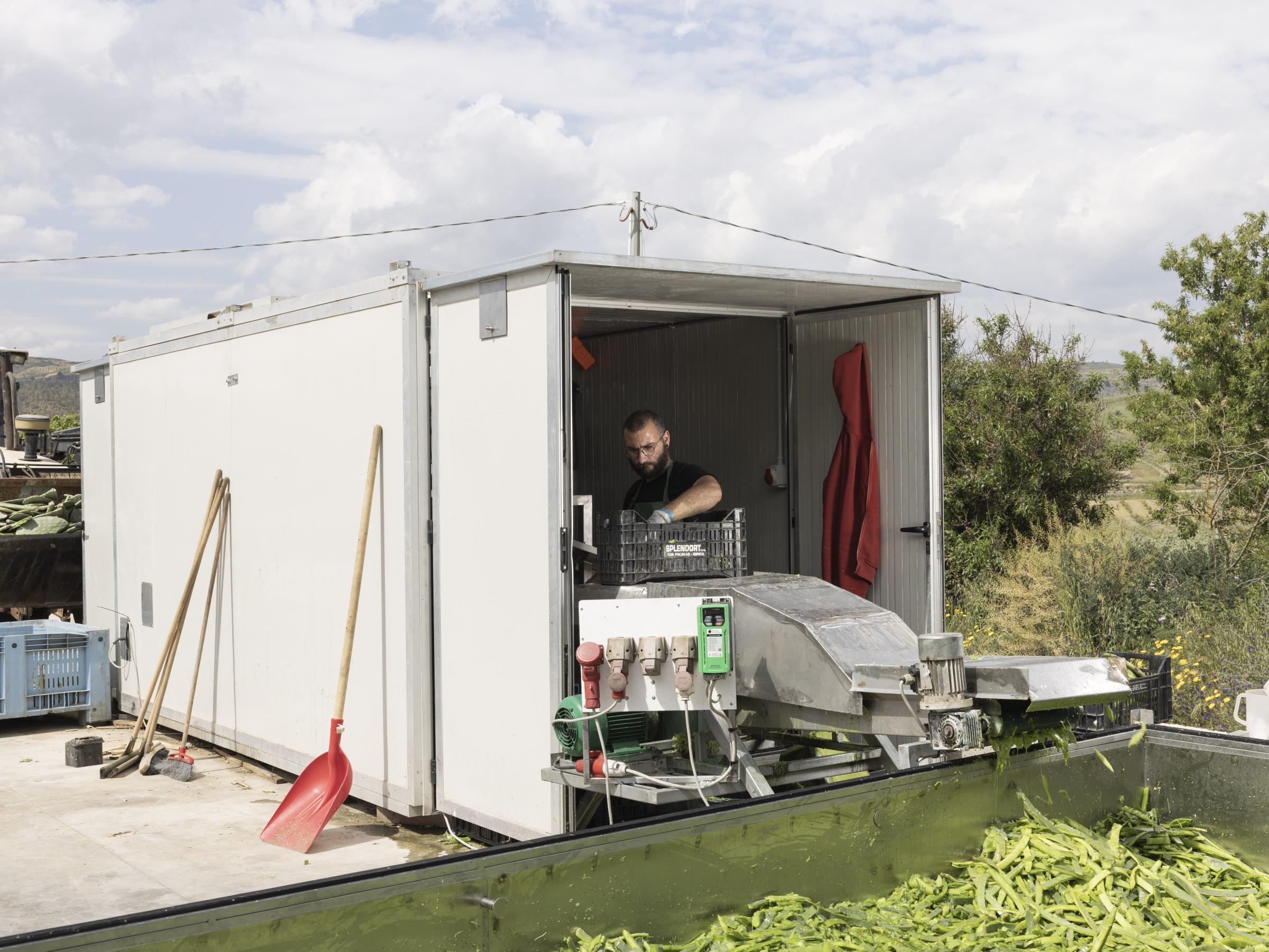
Sicily, May 2022. An operator slices the shovels using a machine specially made for this task. The shovels once harvested are cut into small strips from which useful substances are then made into cosmetic products before the waste being dried
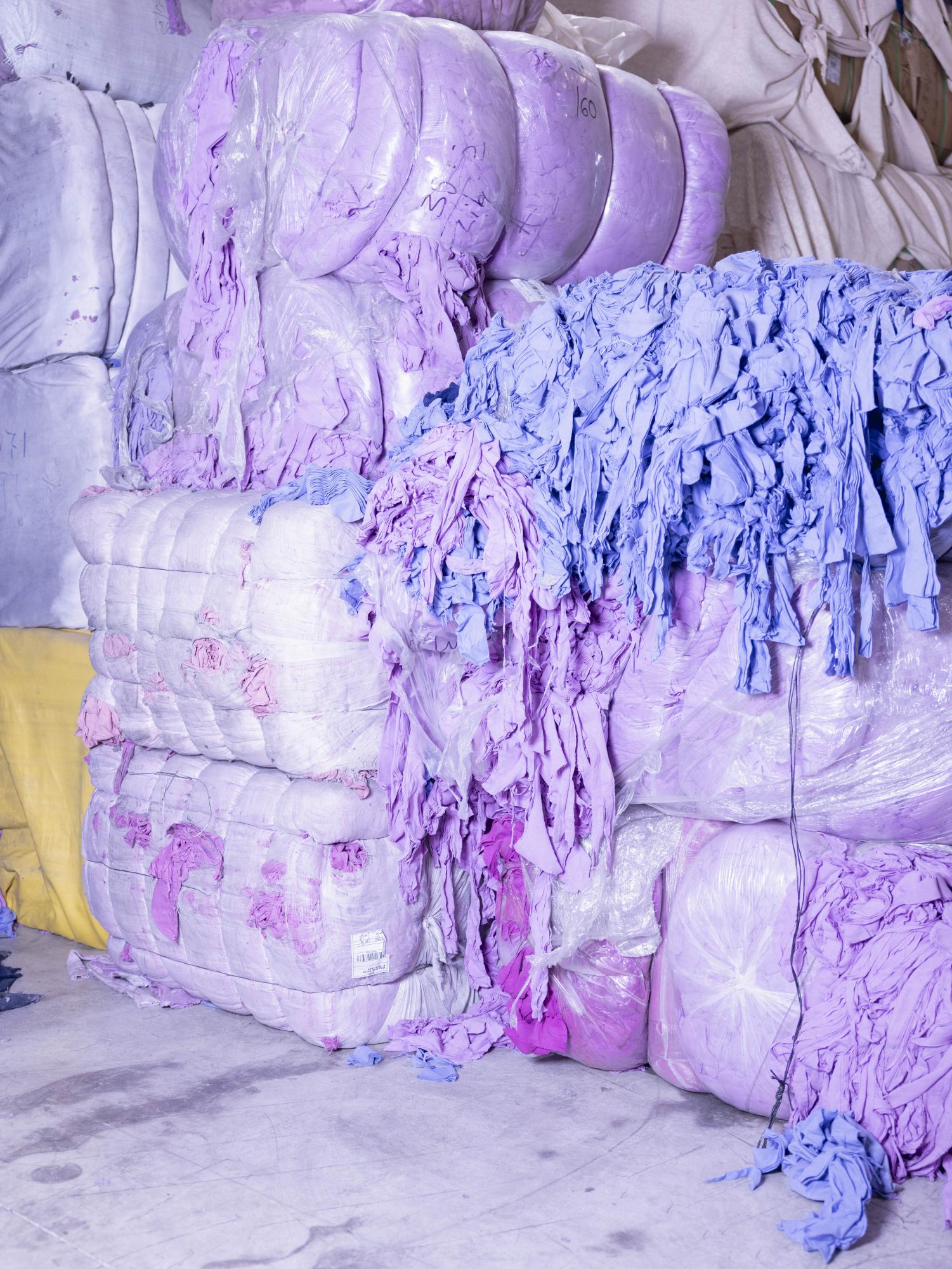
Alicante, Spain, June 2024. Some bales of scrap clothes in the factory warehouse waiting to be processed. The raw textile waste is first divided by color and sorted and then cut into small pieces and processed to obtain 100 percent recycled yarn.
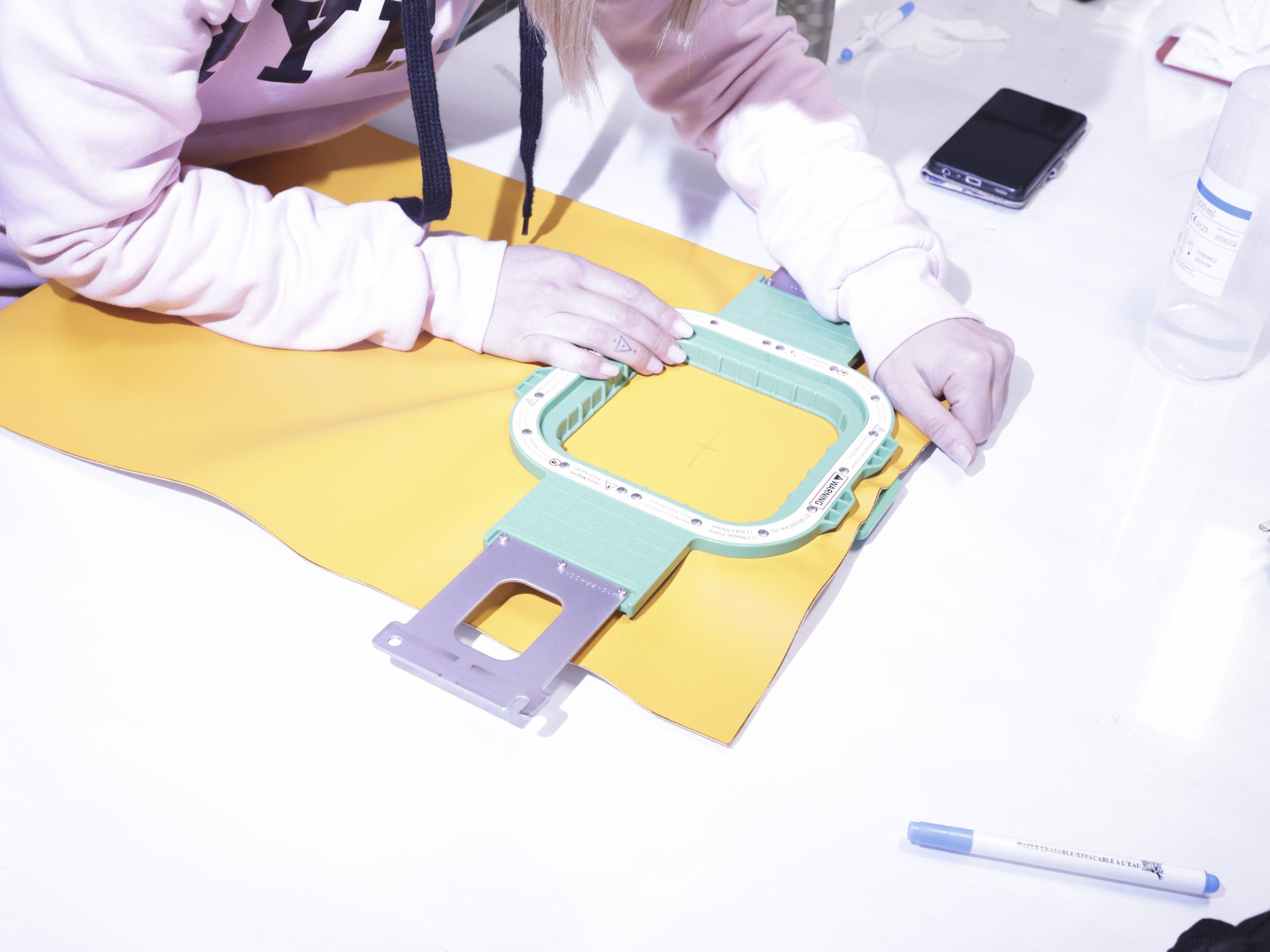
Viterbo, Lazio - March 2023. A worker prepares the biopolymer by inserting it into a frame for the machine embroidery process
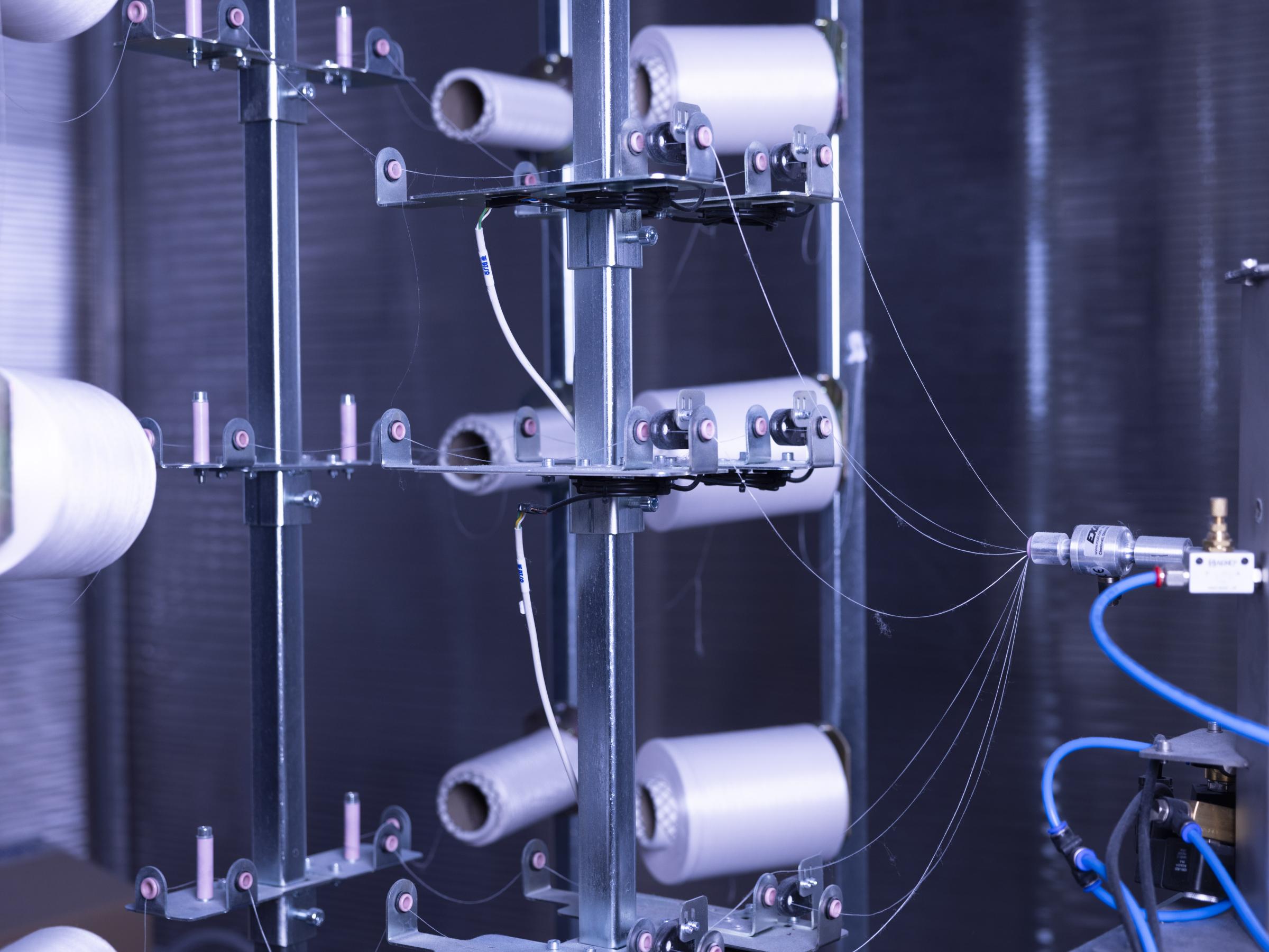
Alicante, Spain, June 2024. The spinning machine is creating the final yarn in the final stage of the production process. The raw textile waste is first divided by color and sorted and then cut into small pieces and processed to obtain 100 percent recycled yarn.
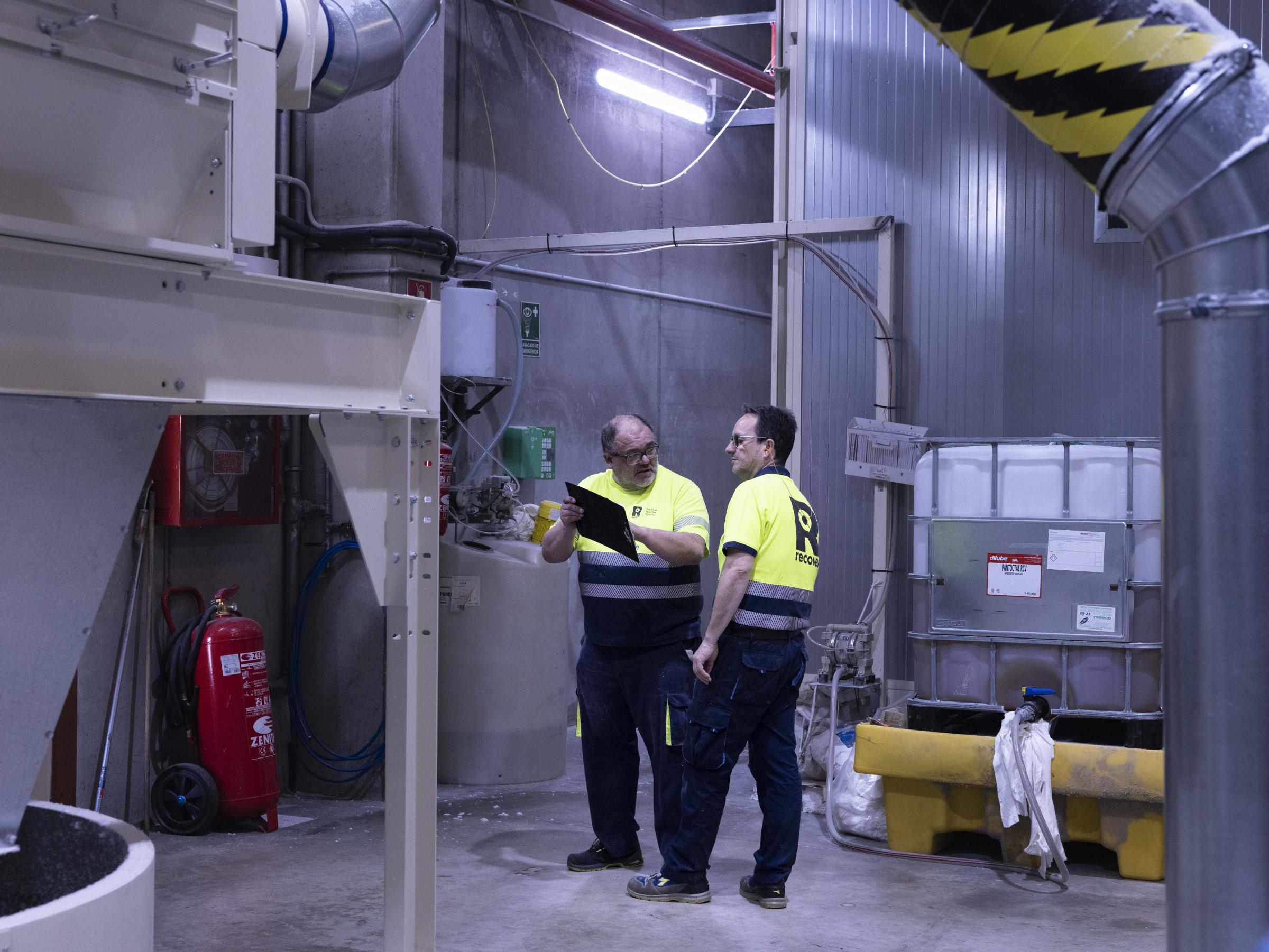
Alicante, Spain, June 2024. Two operators are discussing regarding the process inside the factory.
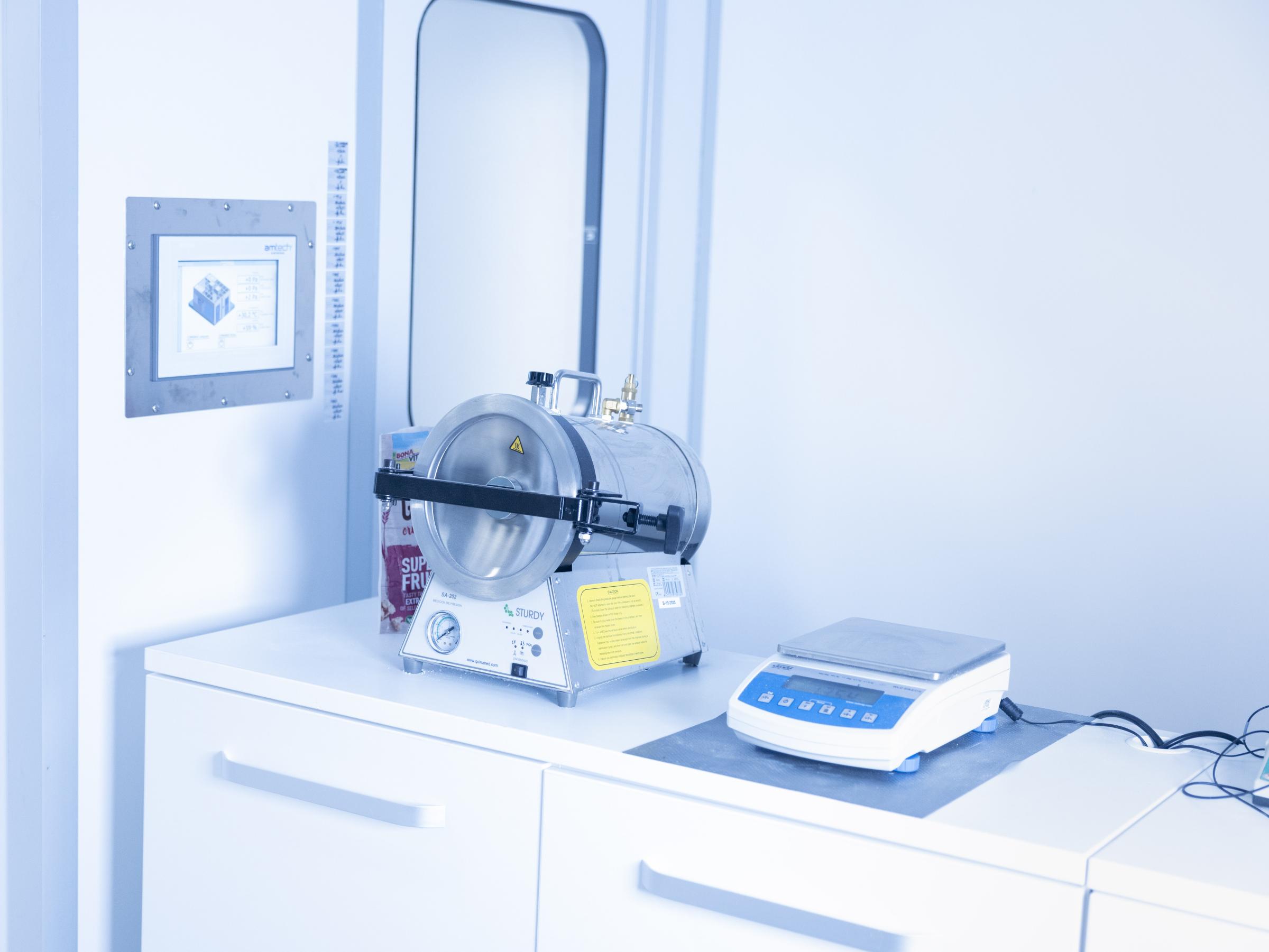
Ferrara, Emilia-Romagna - September 2022. View of a laboratory room. In this lab the dried prickly pear waste is processed into the biopolymer.
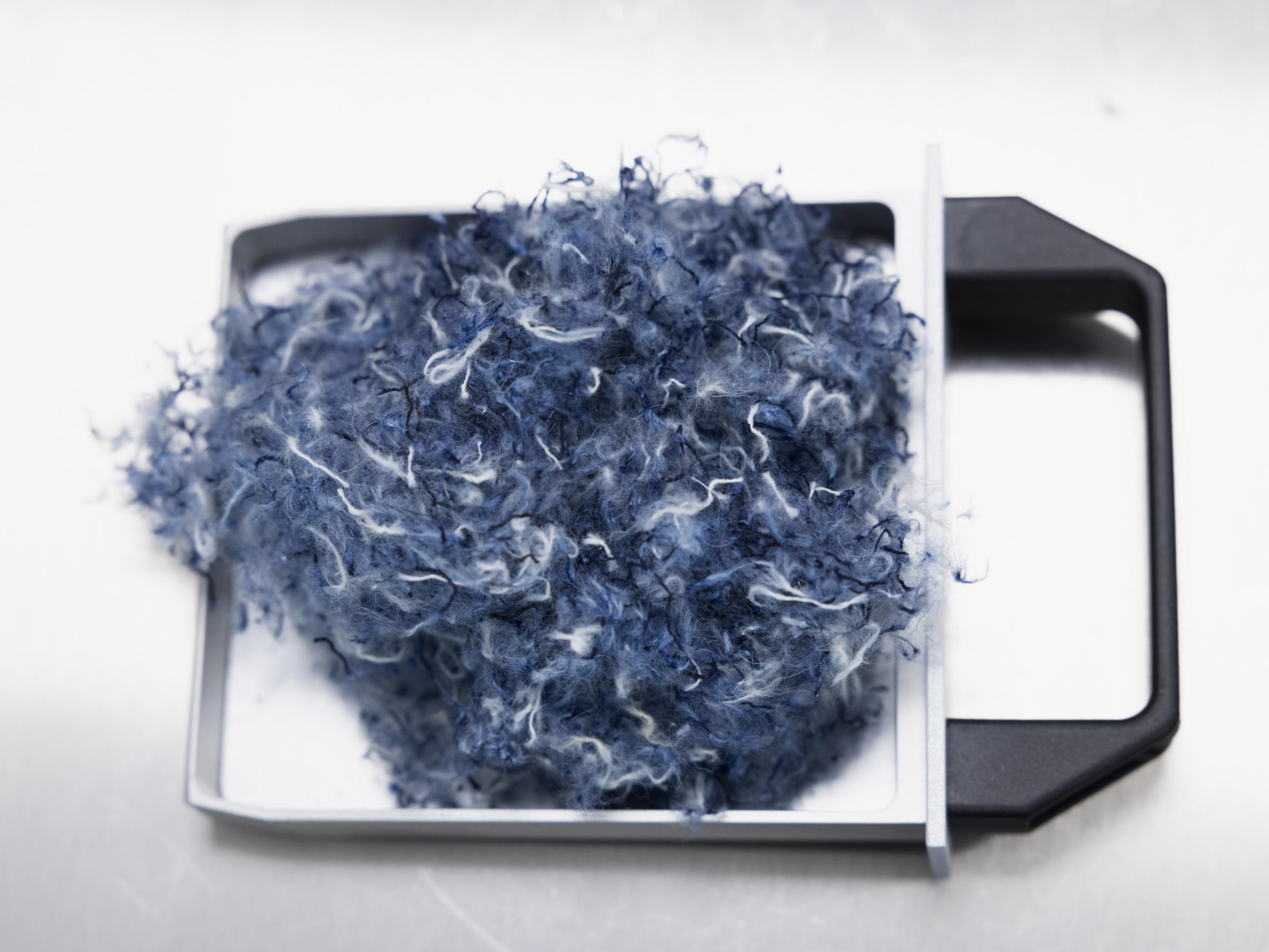
Alicante, Spain, June 2024. A raw tissue sample on the analysis plate. These mixed-color fabrics are then fed into a specially designed machine that will remove all the threads with unwanted colors, returning a homogeneous yarn that will then be processed. In this way, the company can obtain different colors of 100% recycled fabric without requiring any dyeing process and with significantly less environmental impact.
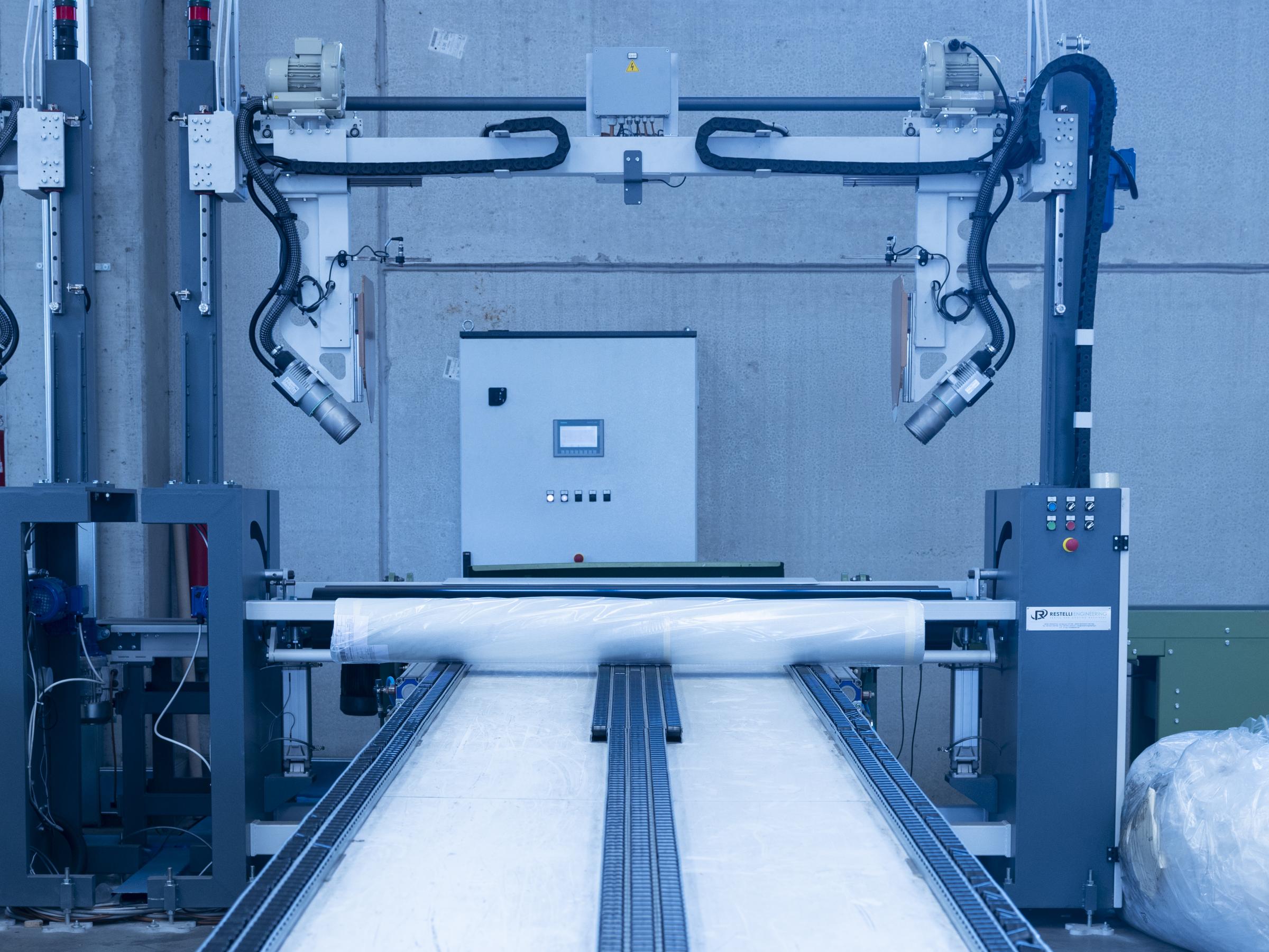
Como, July 2022. Packing machine with a freshly packed finished product.
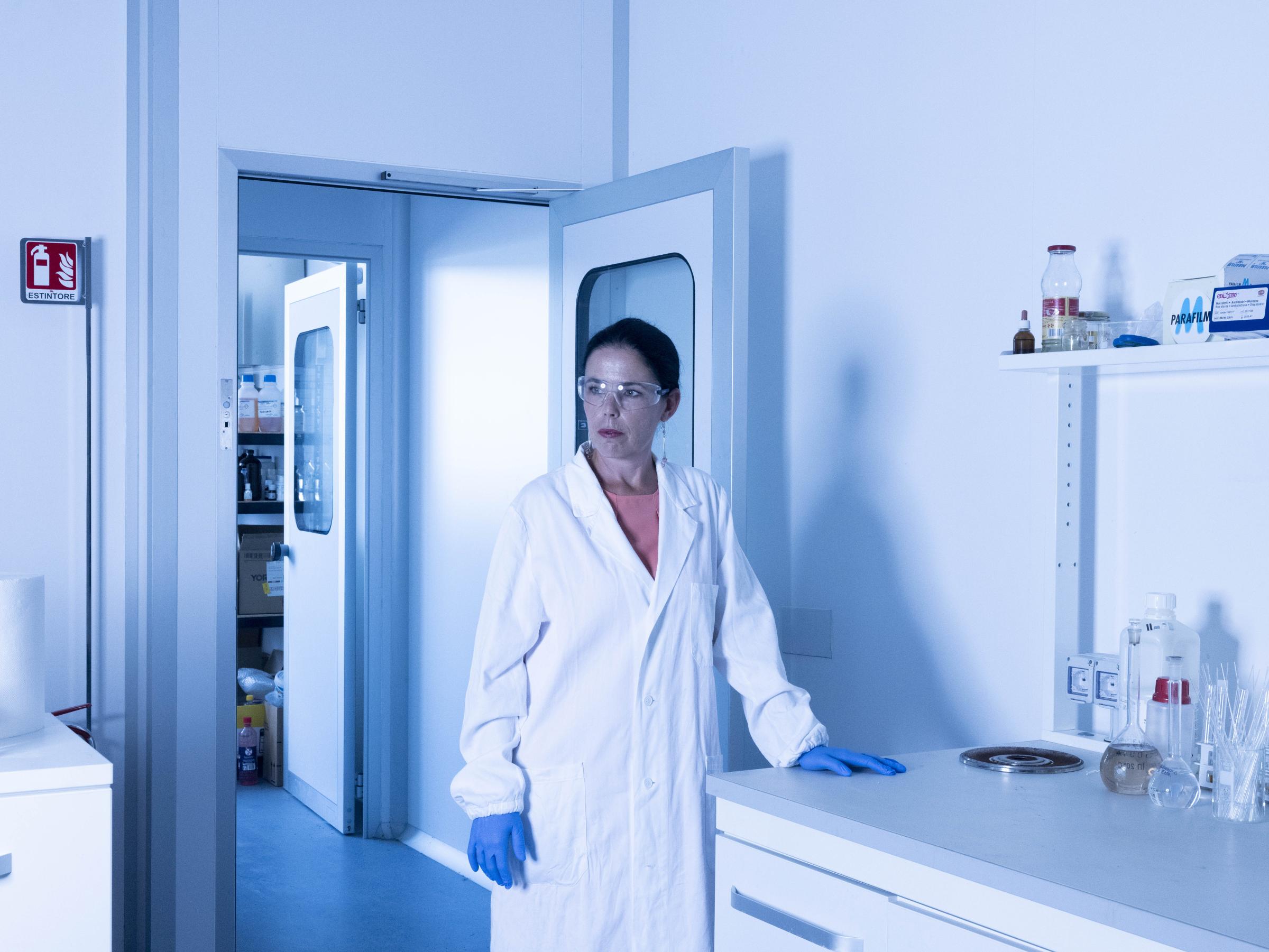
Ferrara, Emilia-Romagna - September 2022. Nikla, a colleague of Roberto's with whom she shares the lab, poses for a portrait.
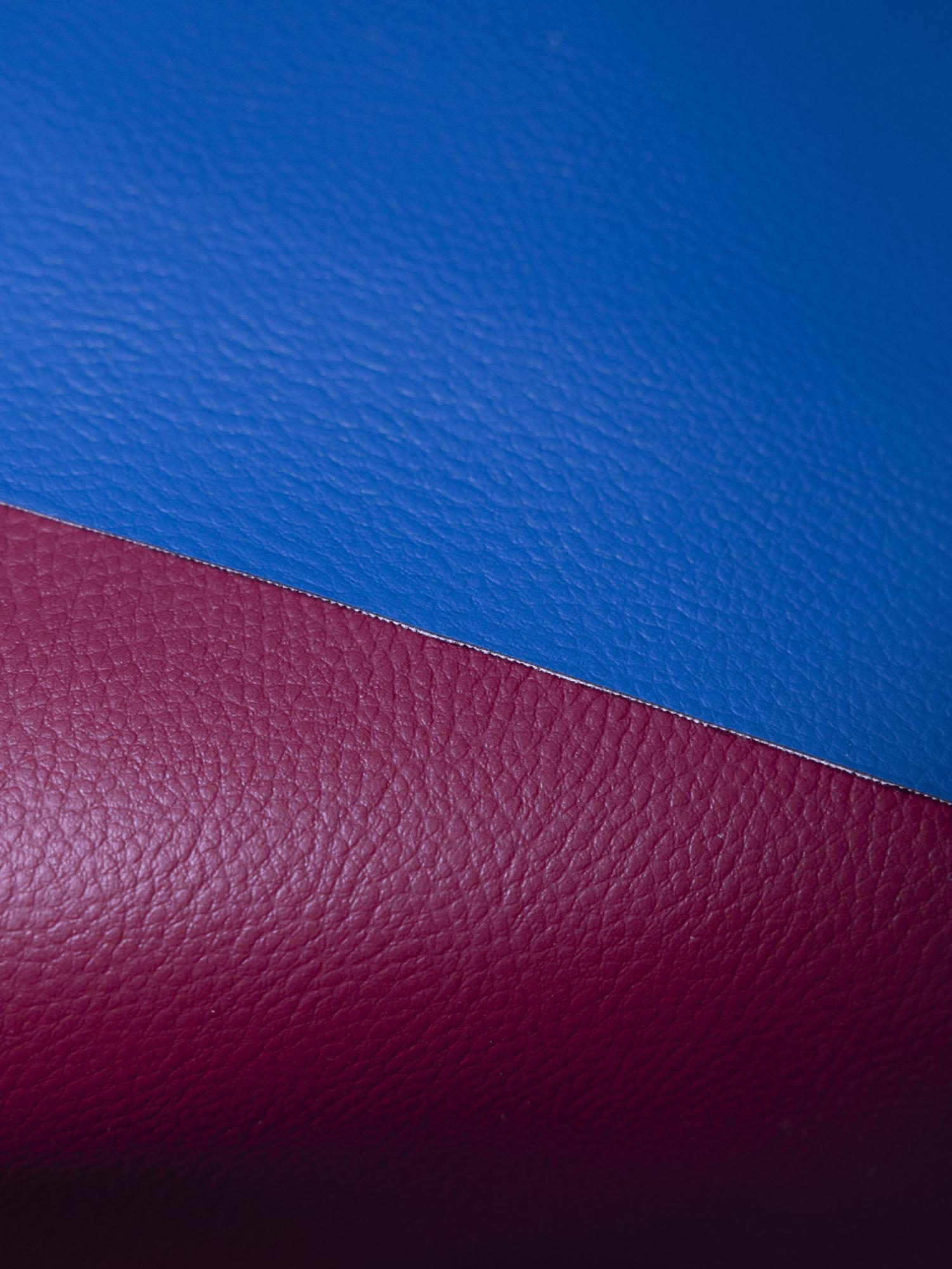
Milano, Lombardia - September 2022. Detail of the texture of the biopolymer. Biopolymer at the end of its treatments has the same physical and strength characteristics as real leather and can be used countless different fields, from fashion to luxury interiors
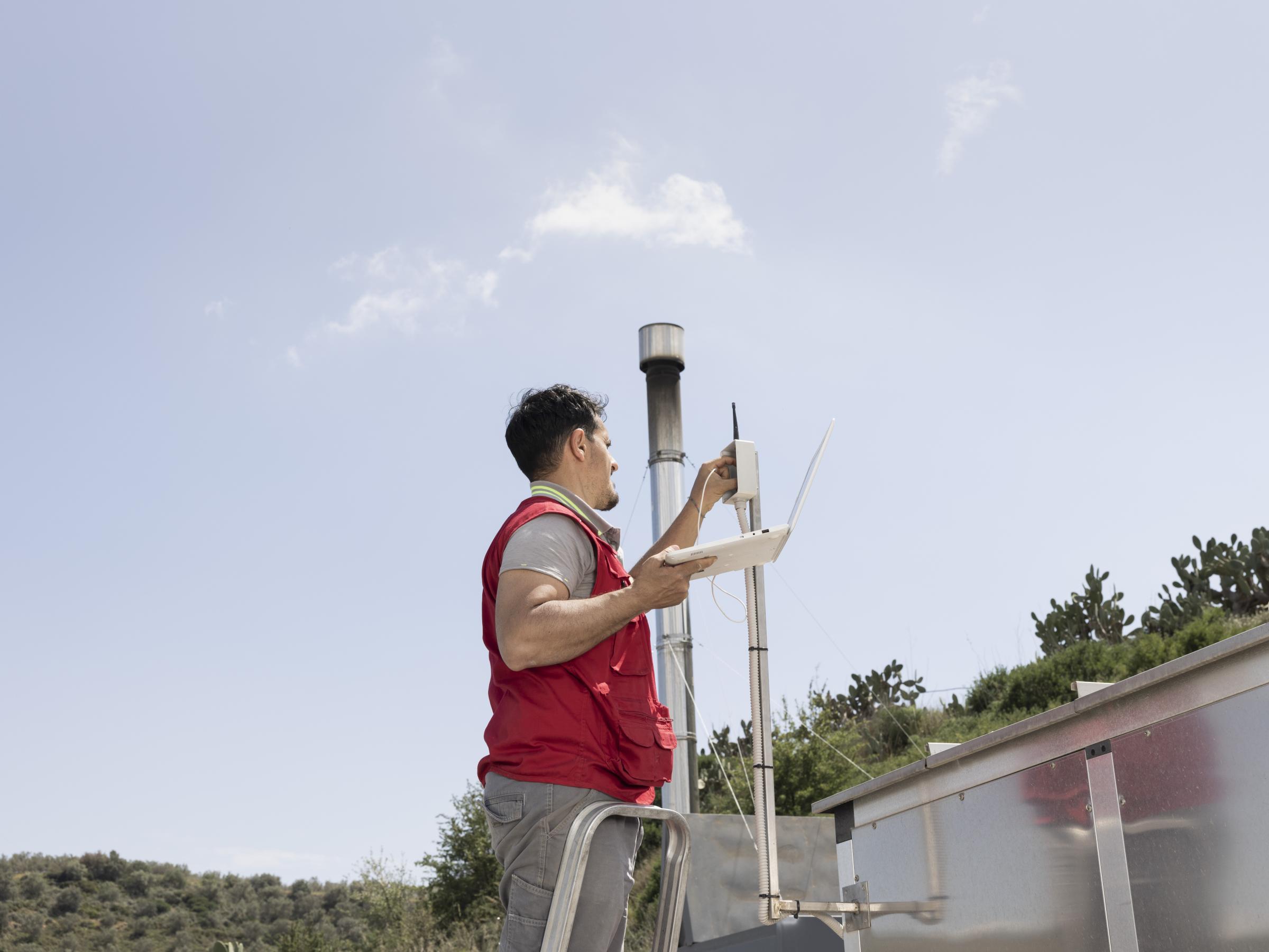
Sicily, May 2022. One of the engineers who designed the drying plant is doing maintenance work. This plants does not exist commercially and was entirely designed and built for drying cactus waste product.
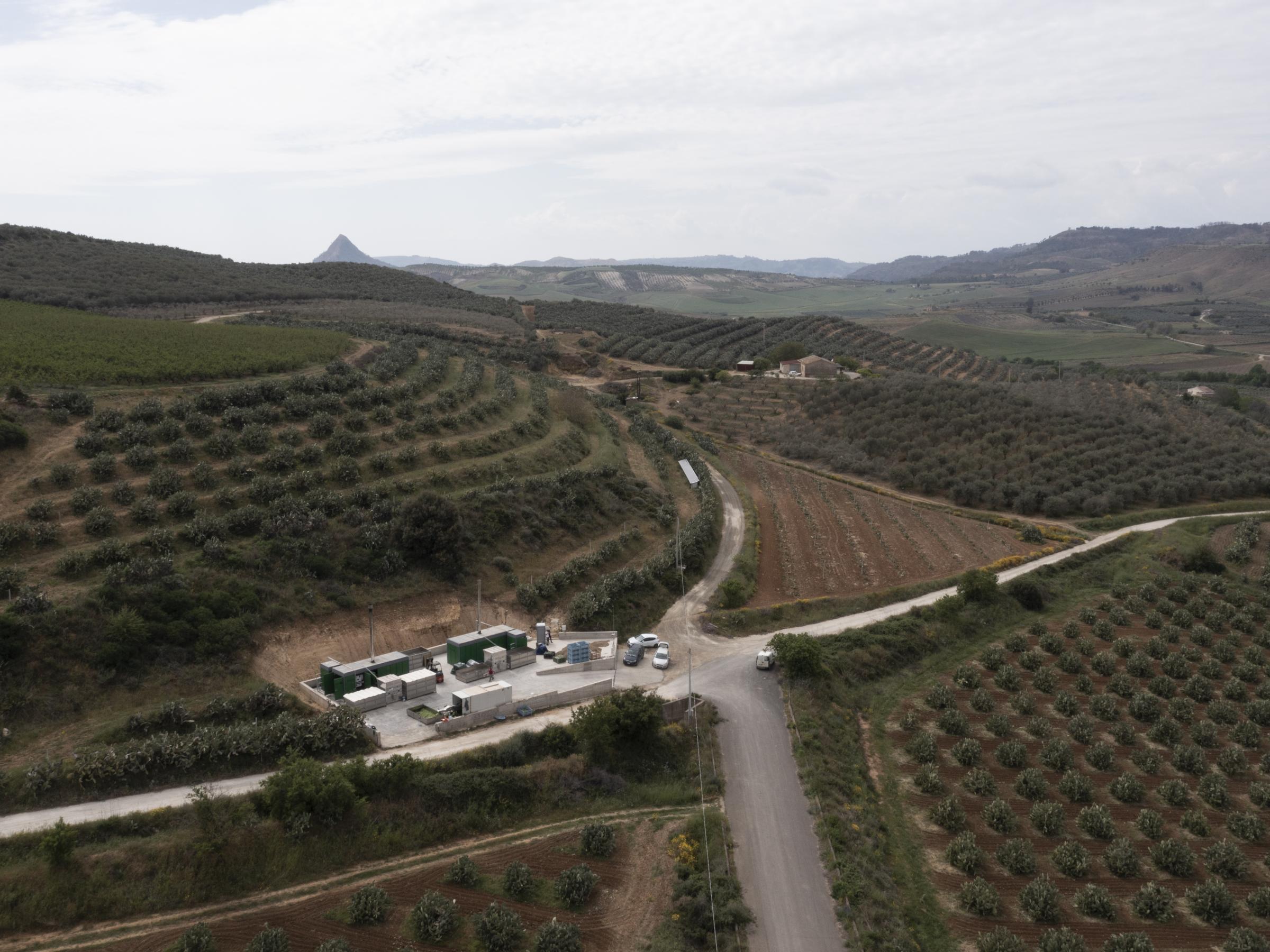
Sicily, May 2022. Overhead view of the impiant into the prickly pear fields. Mazzarino Italia
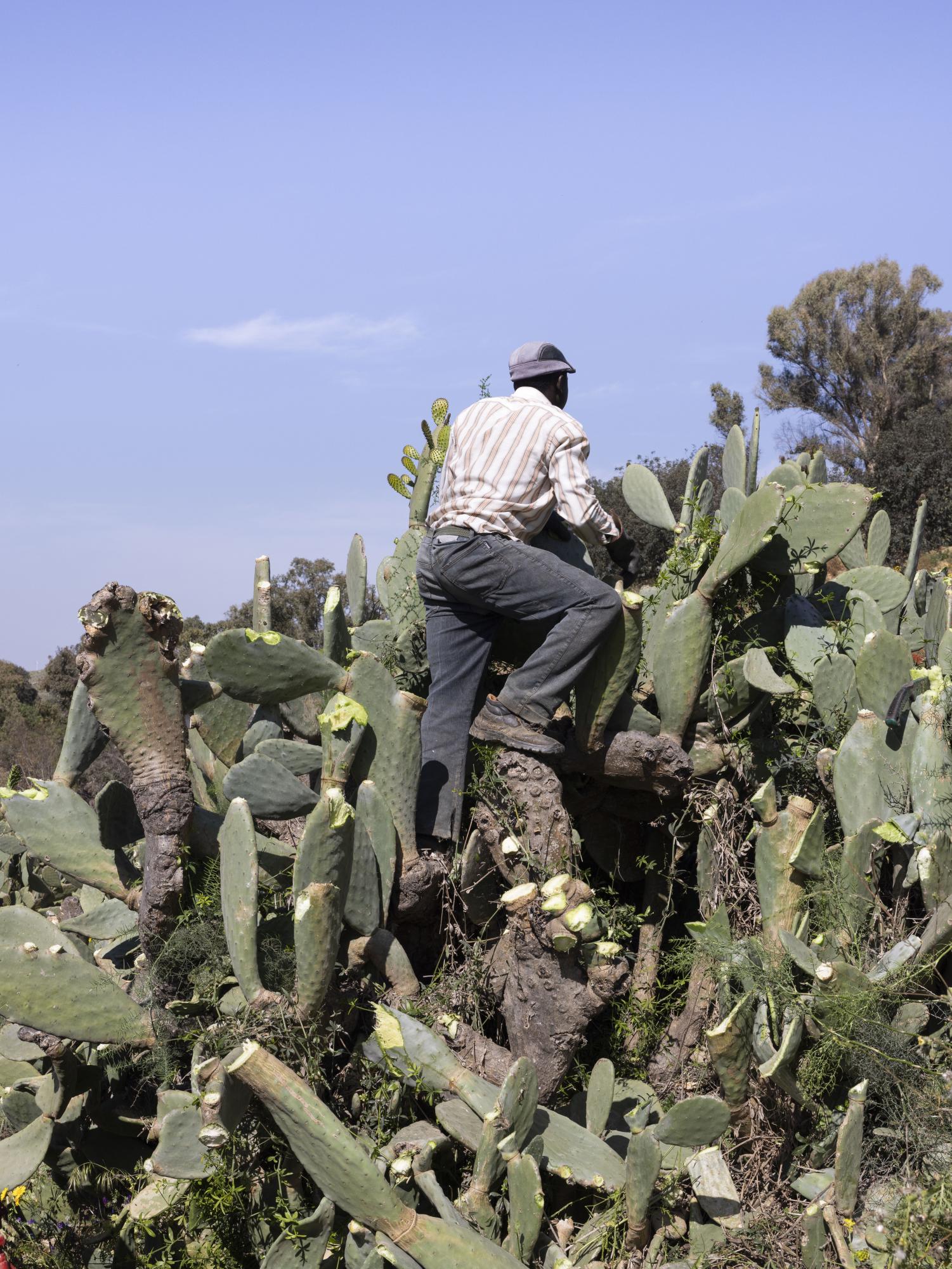
Sicily, May 2022. A worker cuts prickly pear blades inside the company. These blades are used for the production of cosmetic products; the waste will be used to produce the bio-polymer that will make bio-based leather
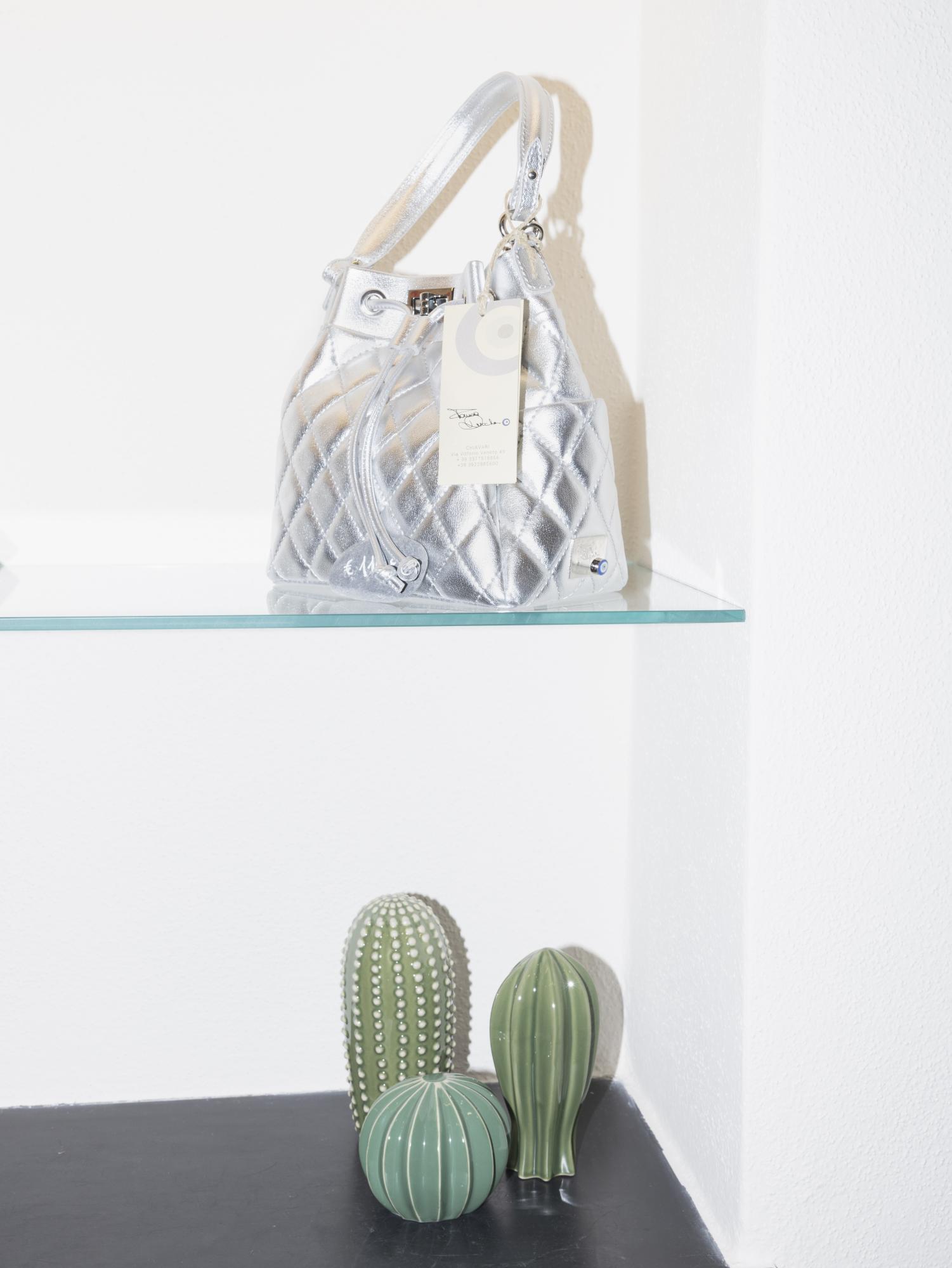
Chiavari, Liguria - July 2023. Bags made from the biopolymer are displayed inside a fashion store at its grand opening.




















